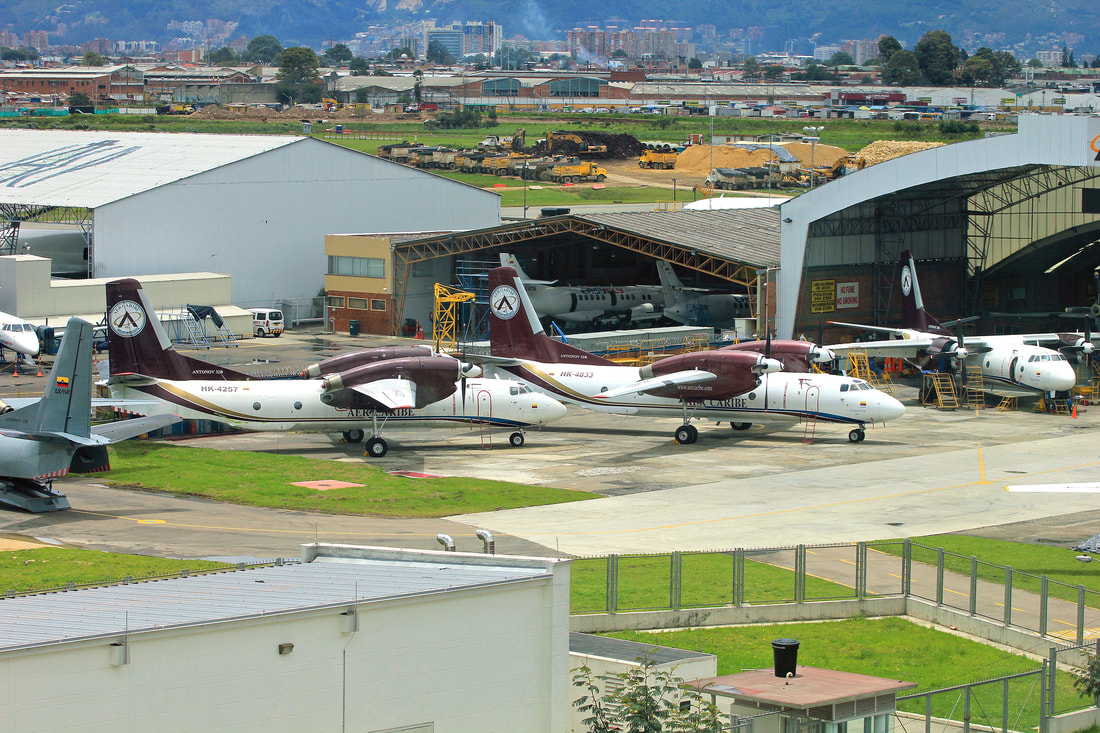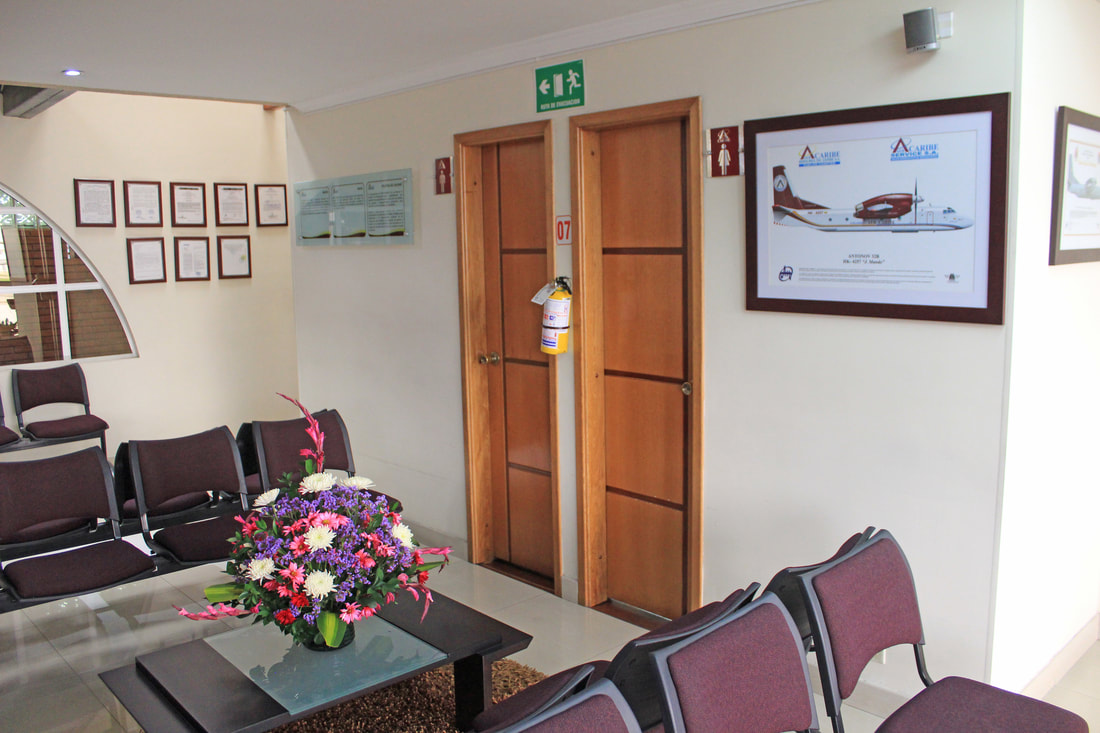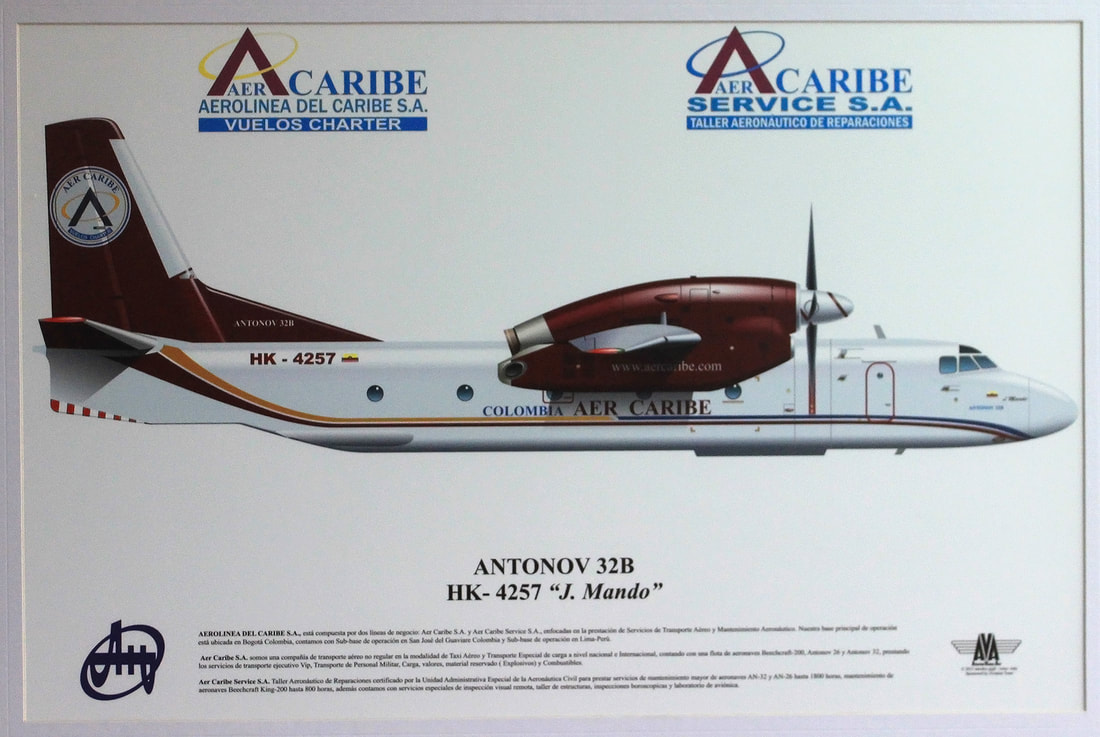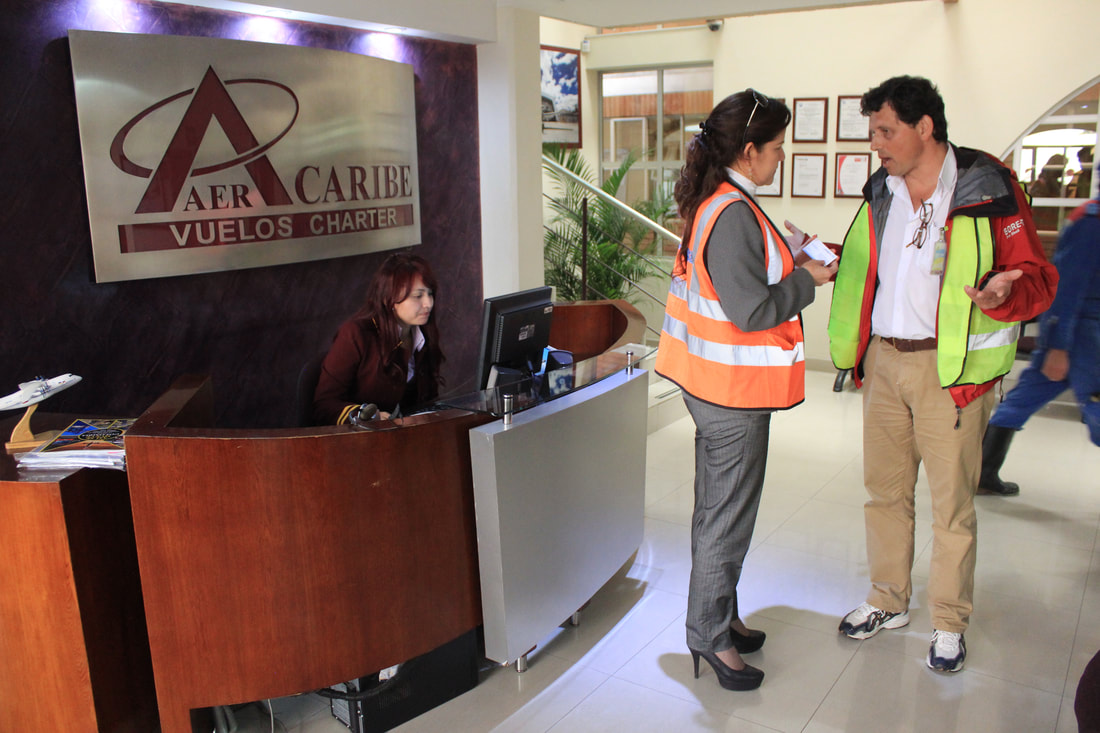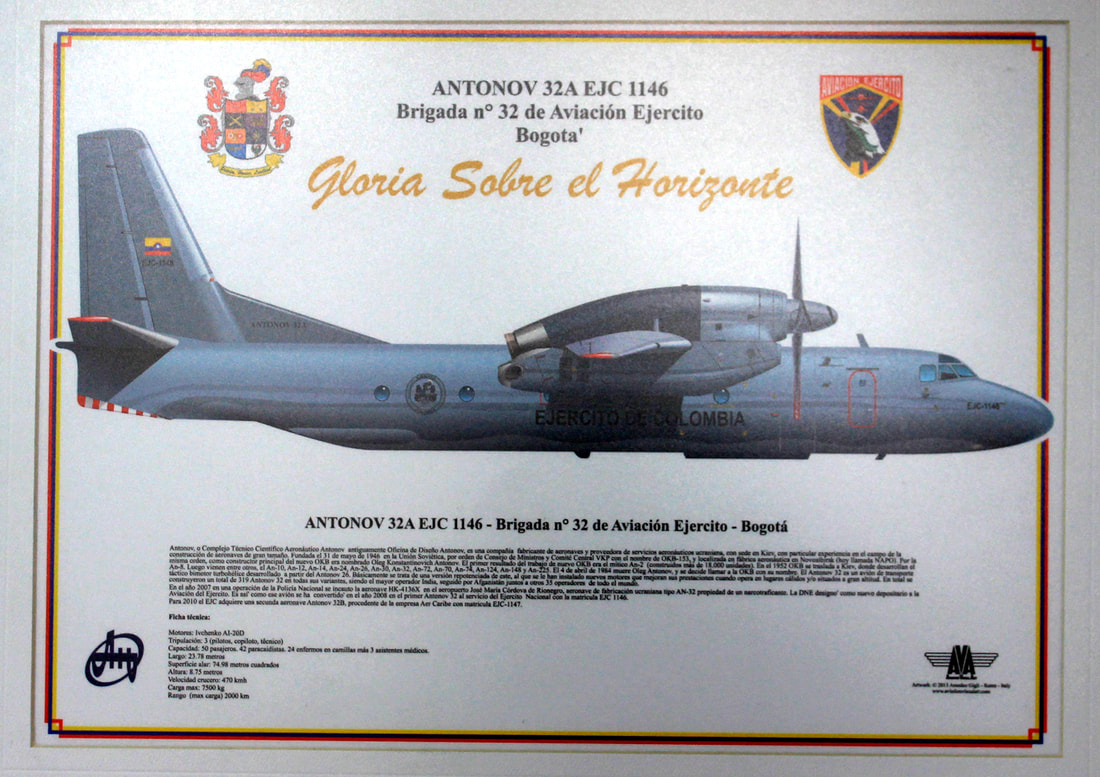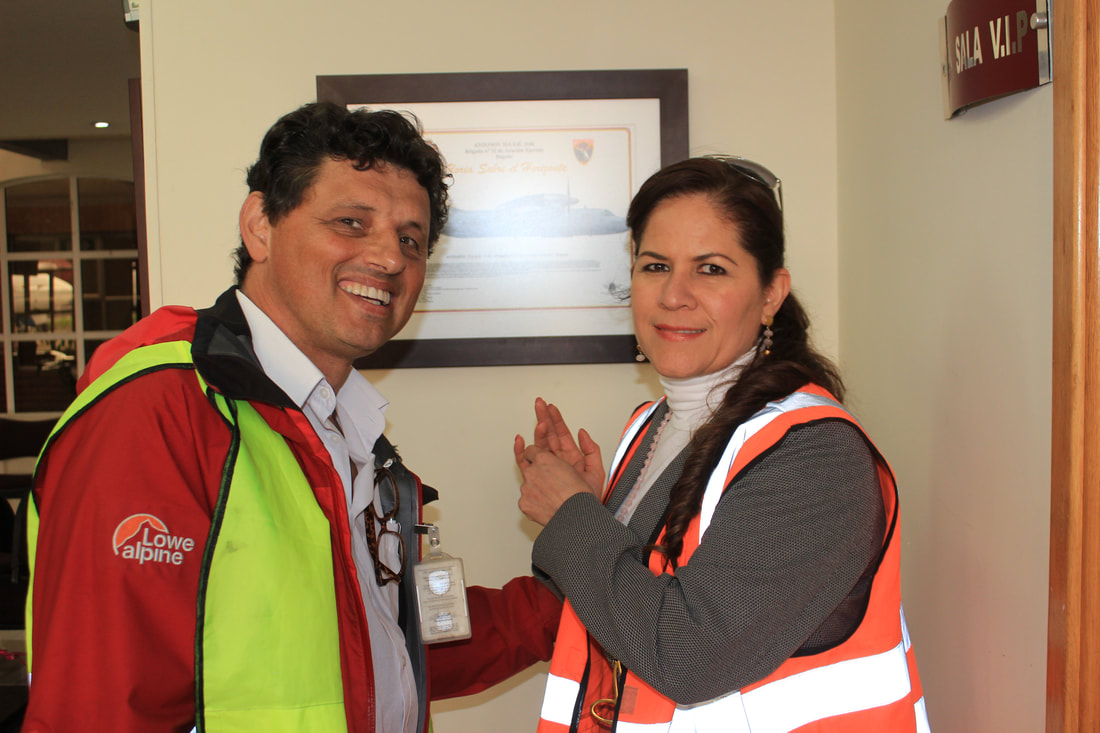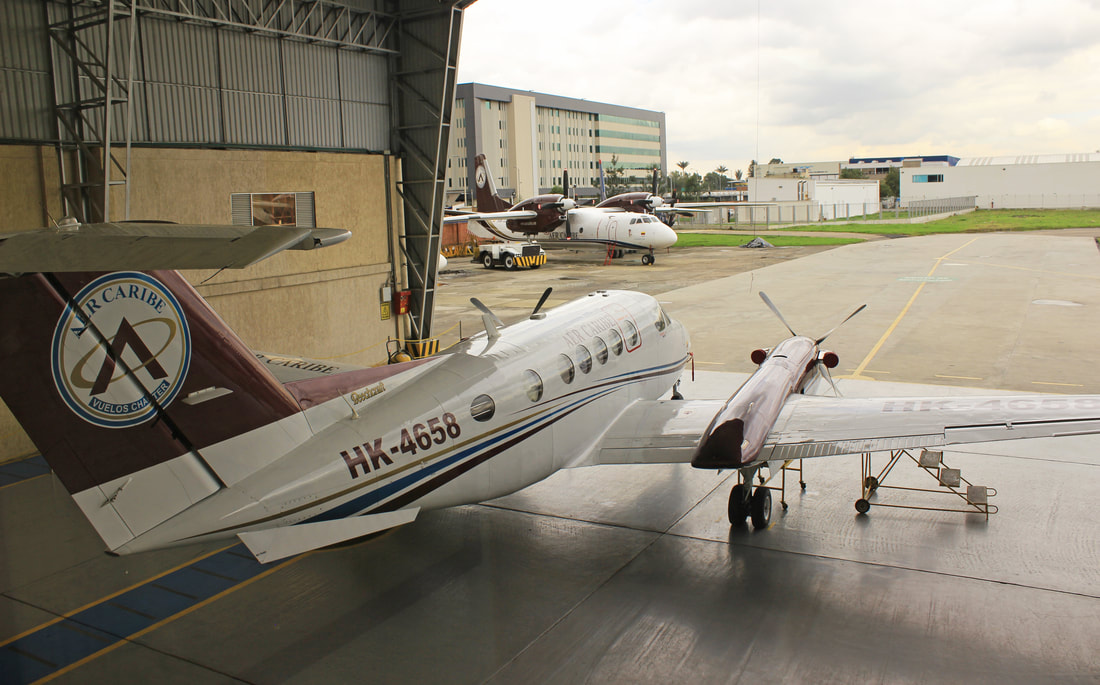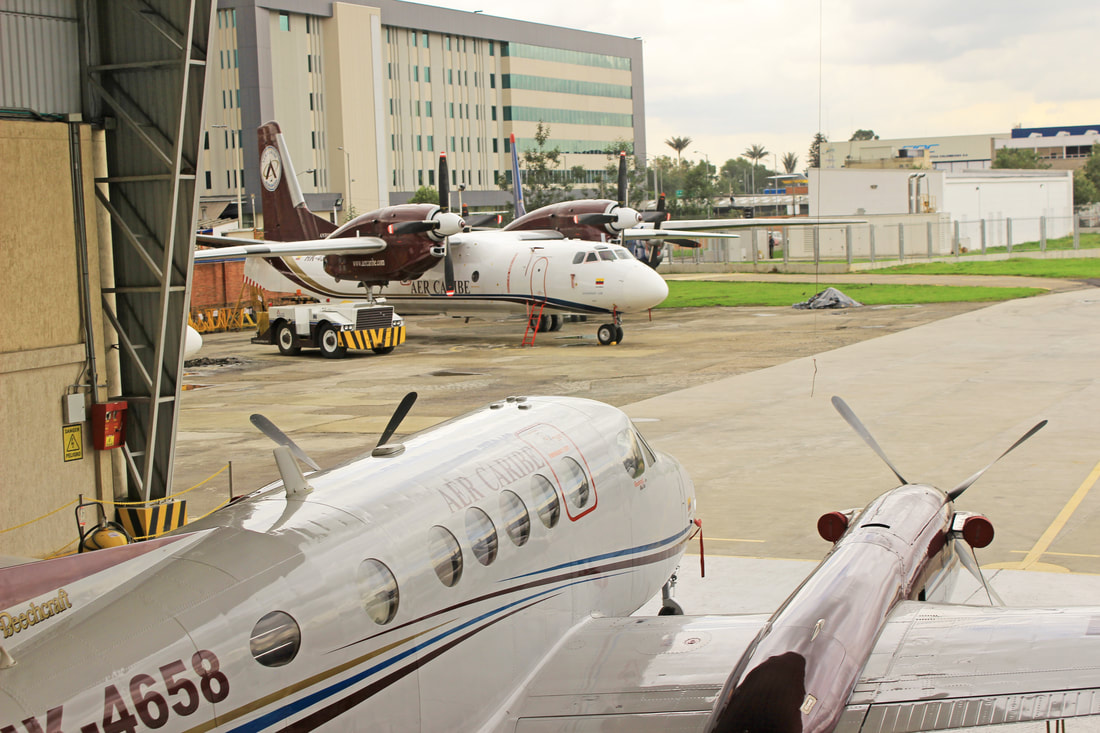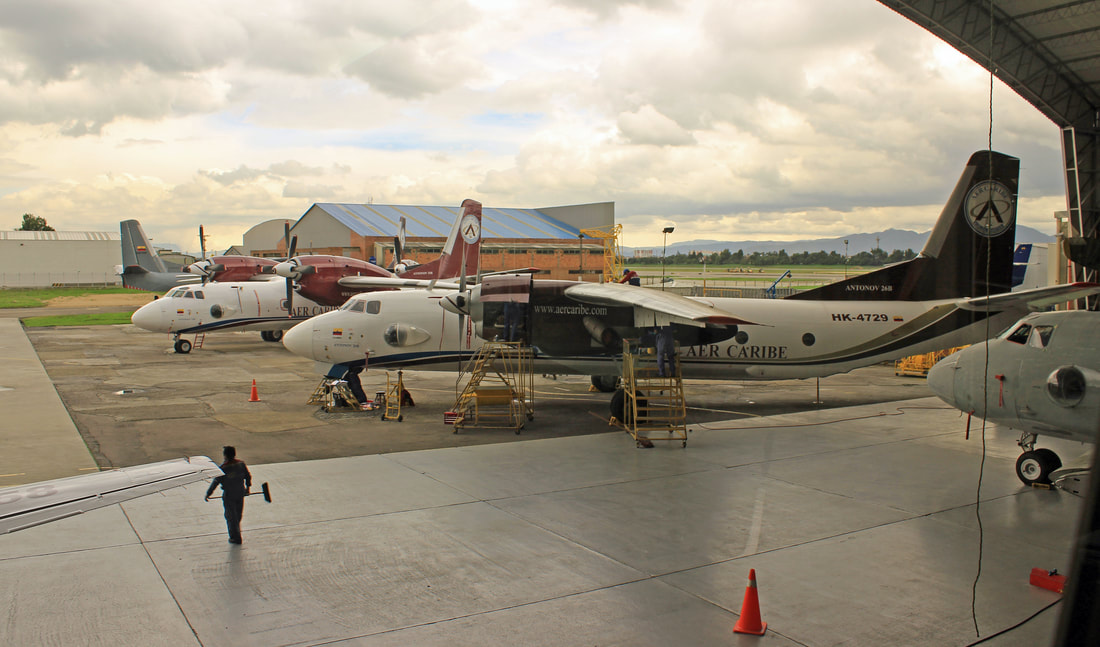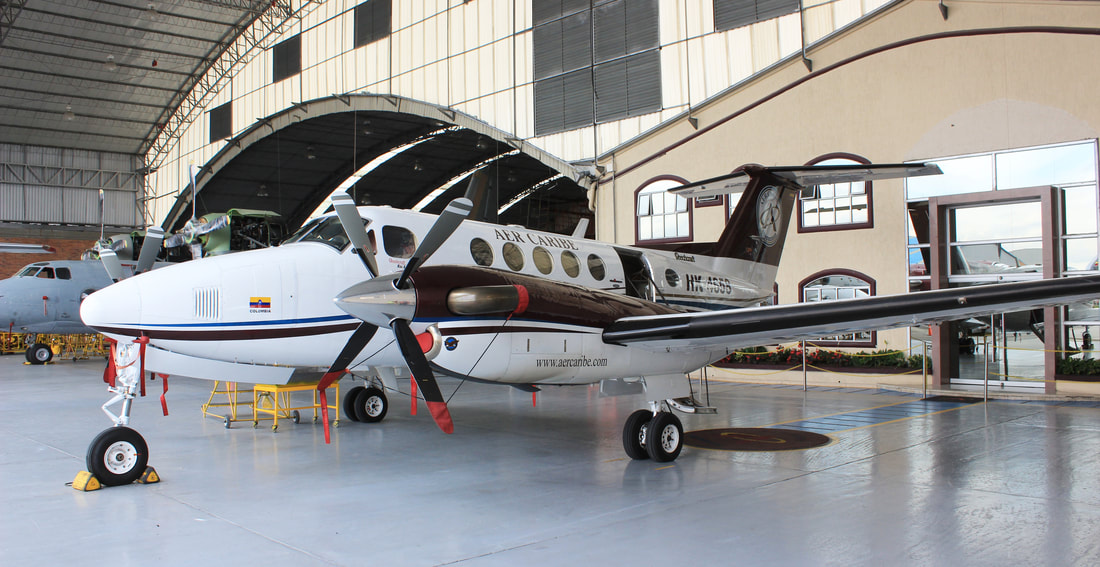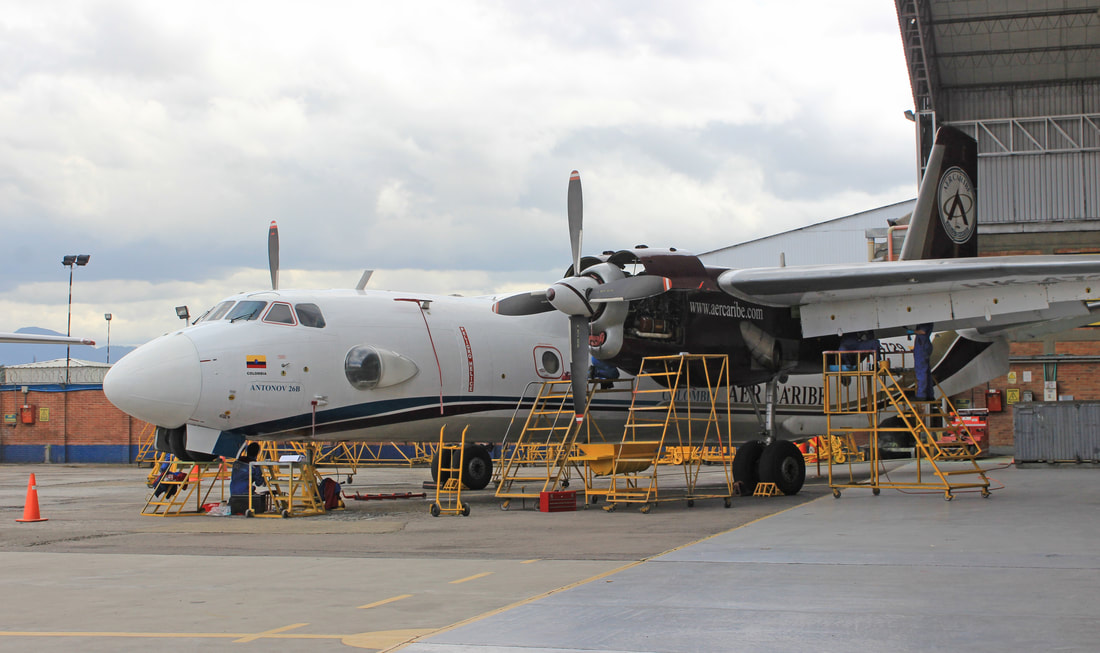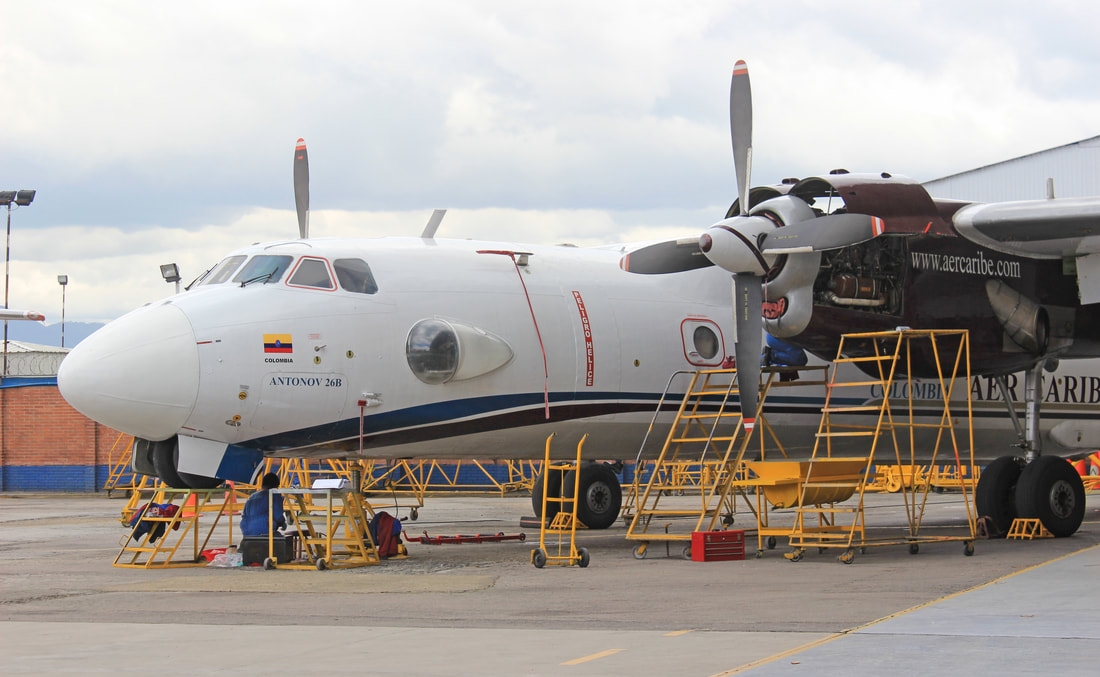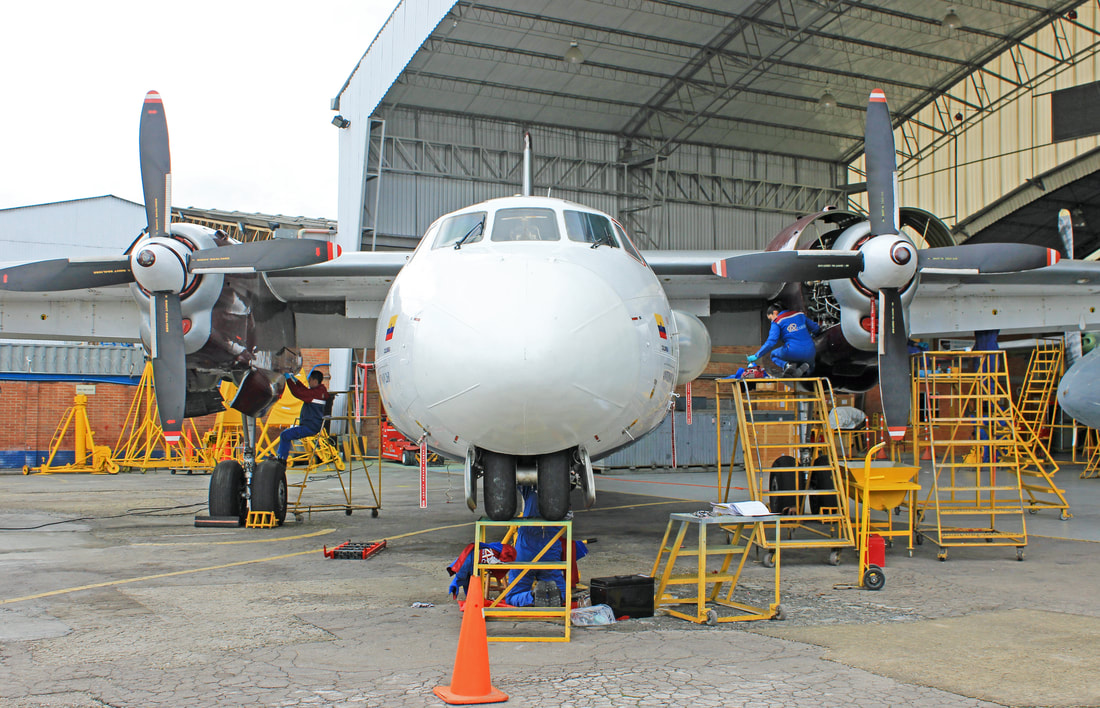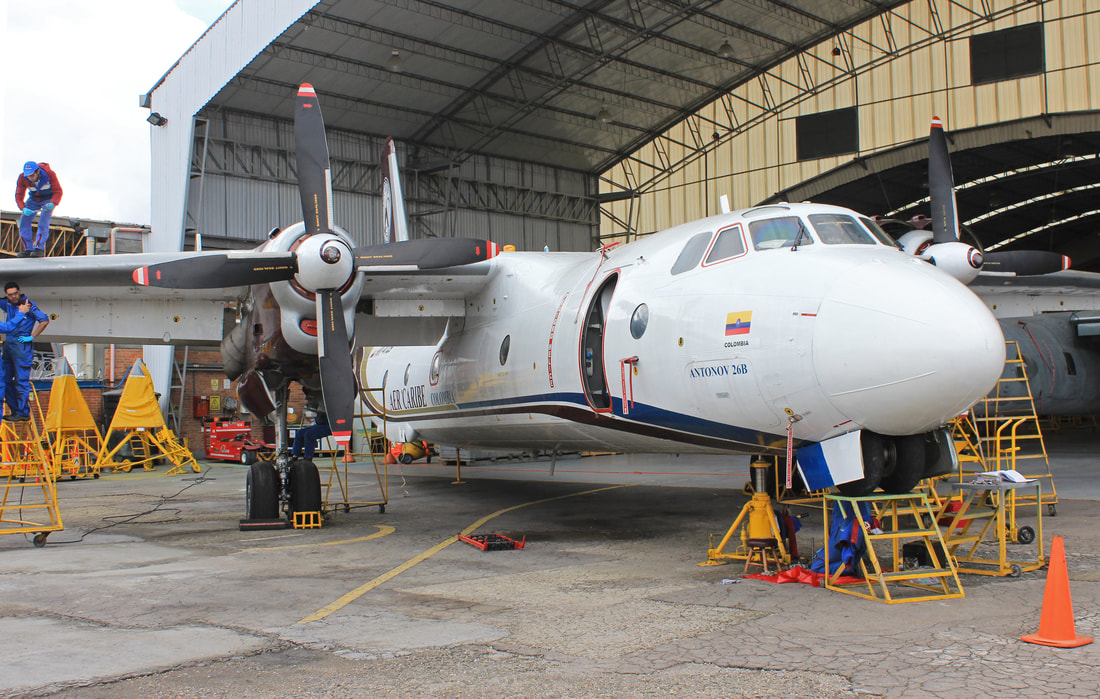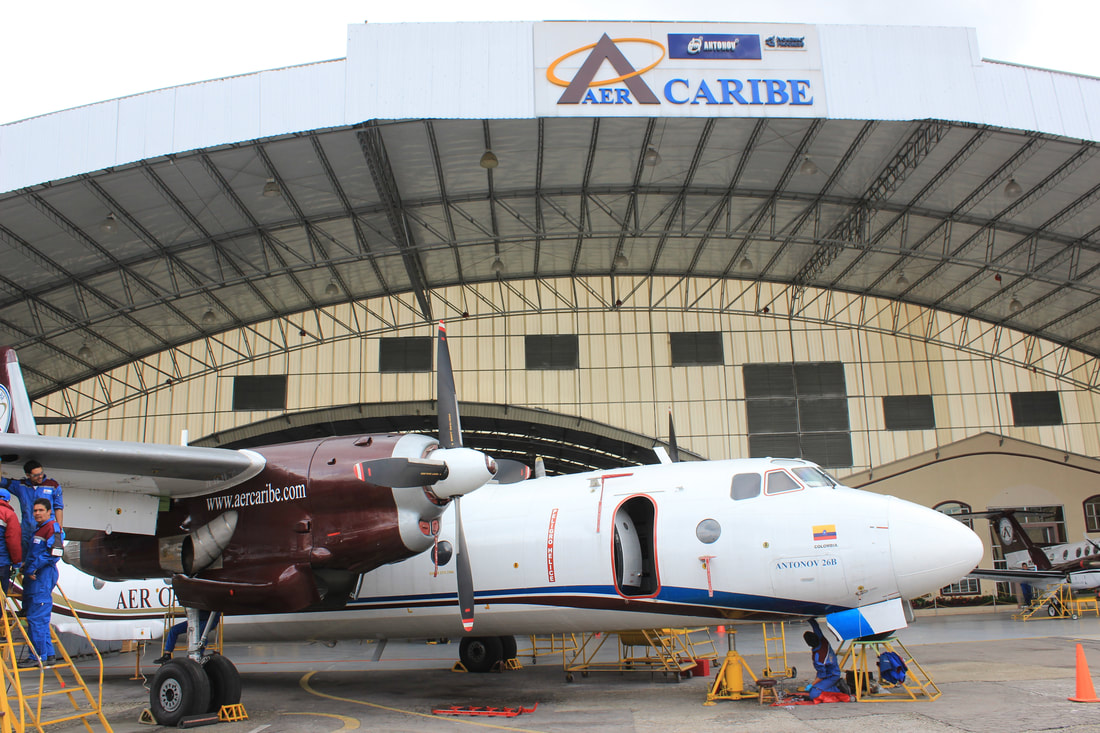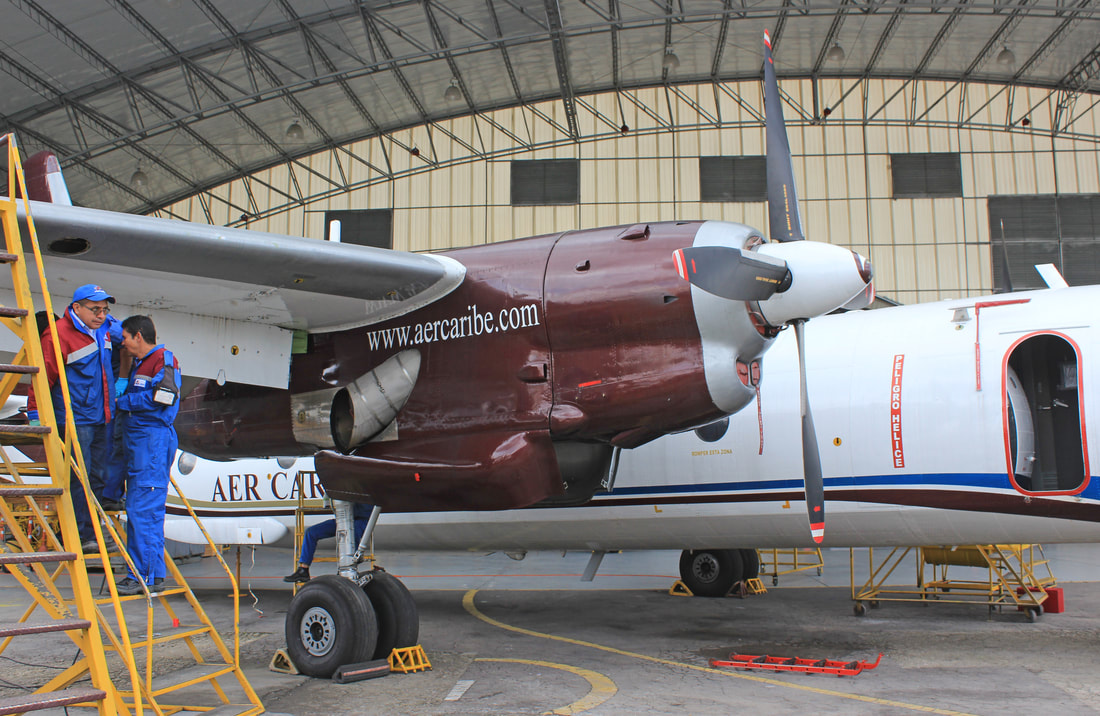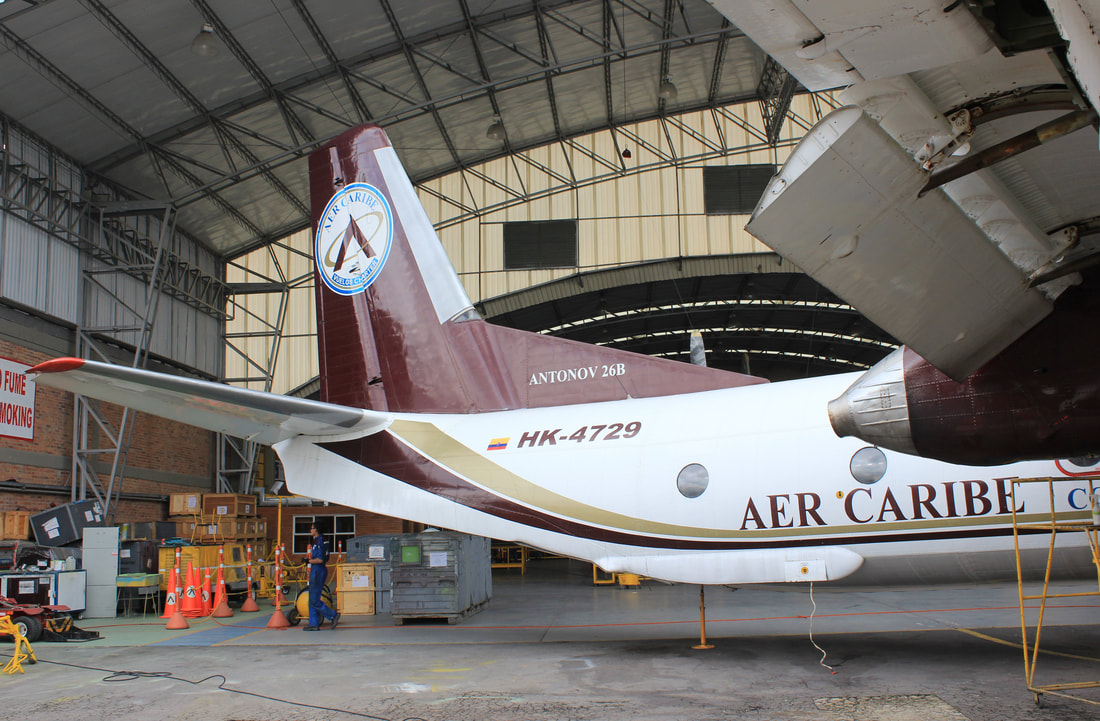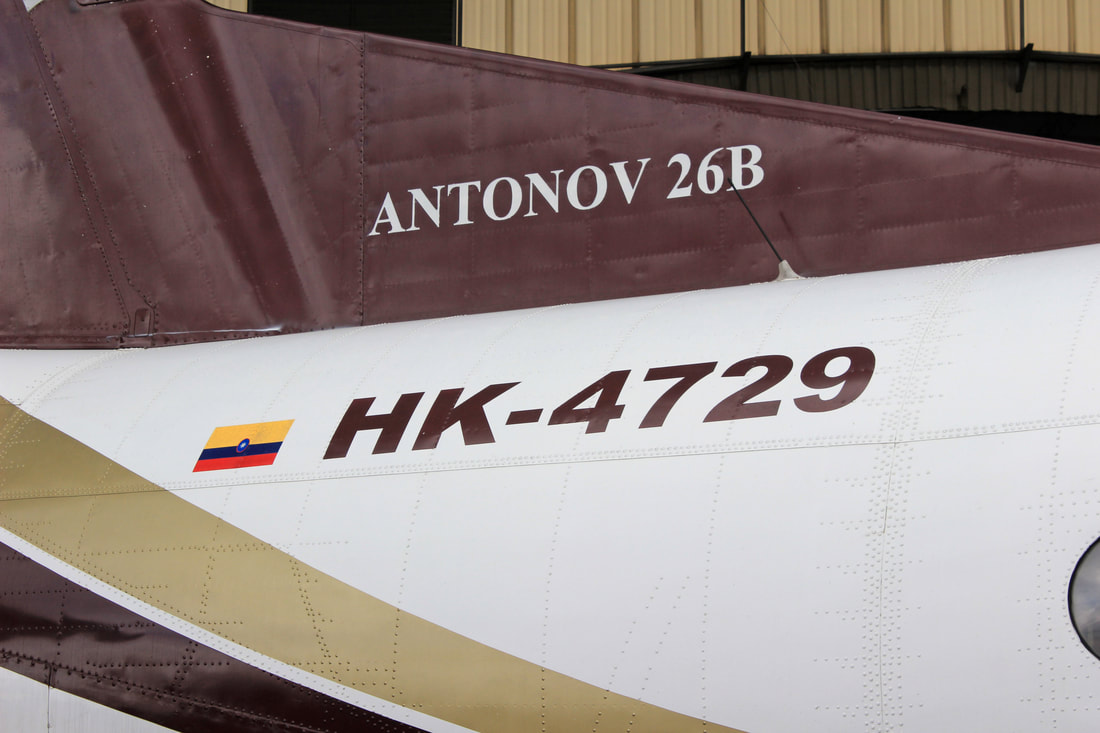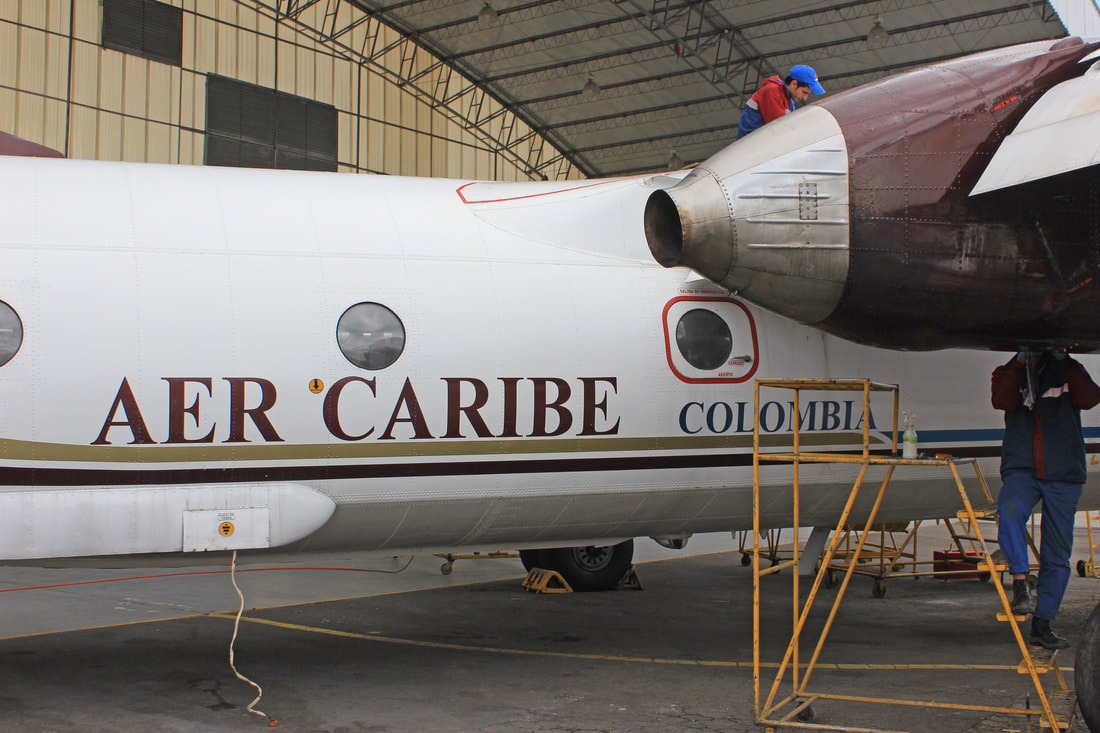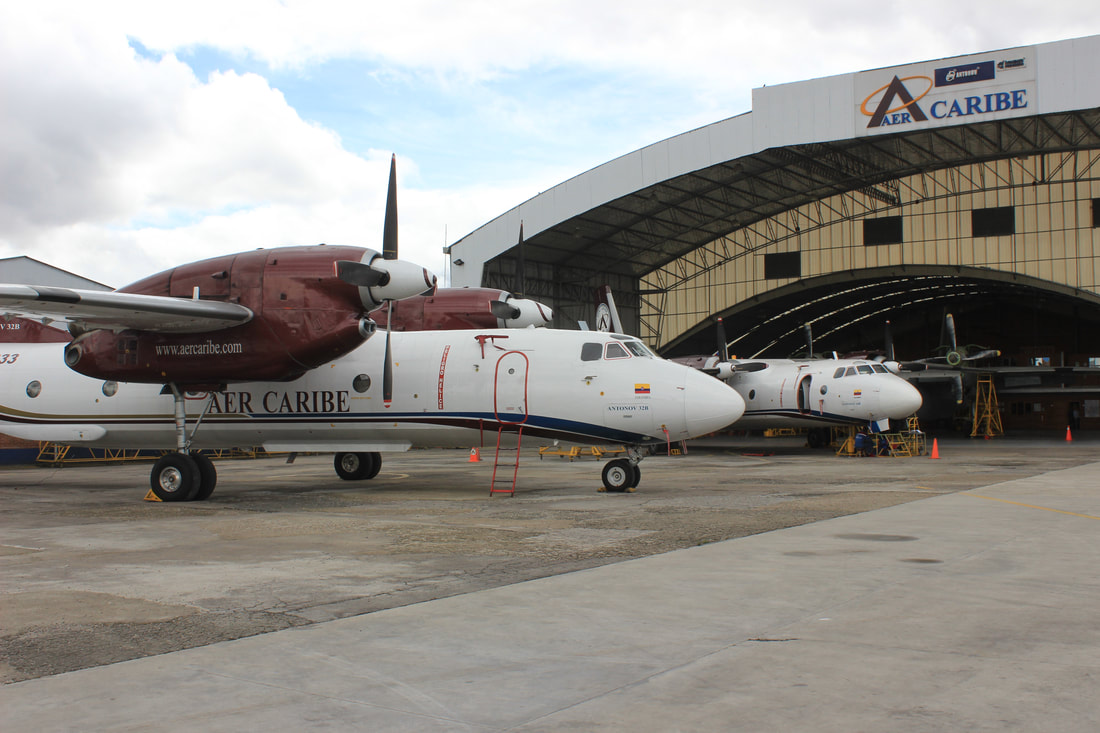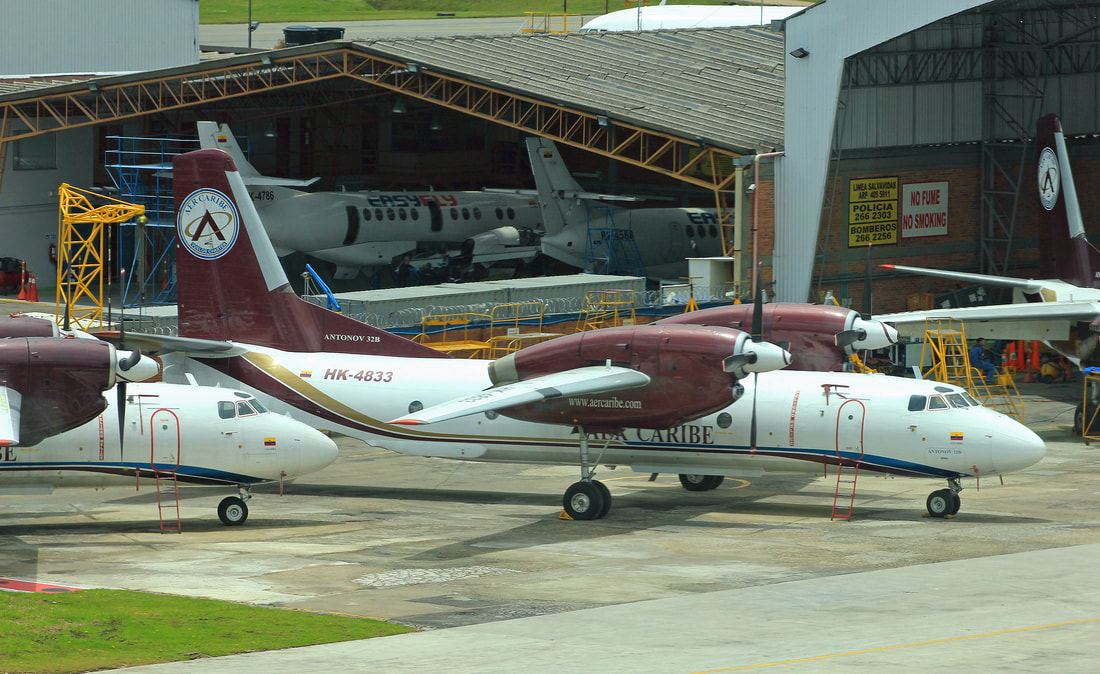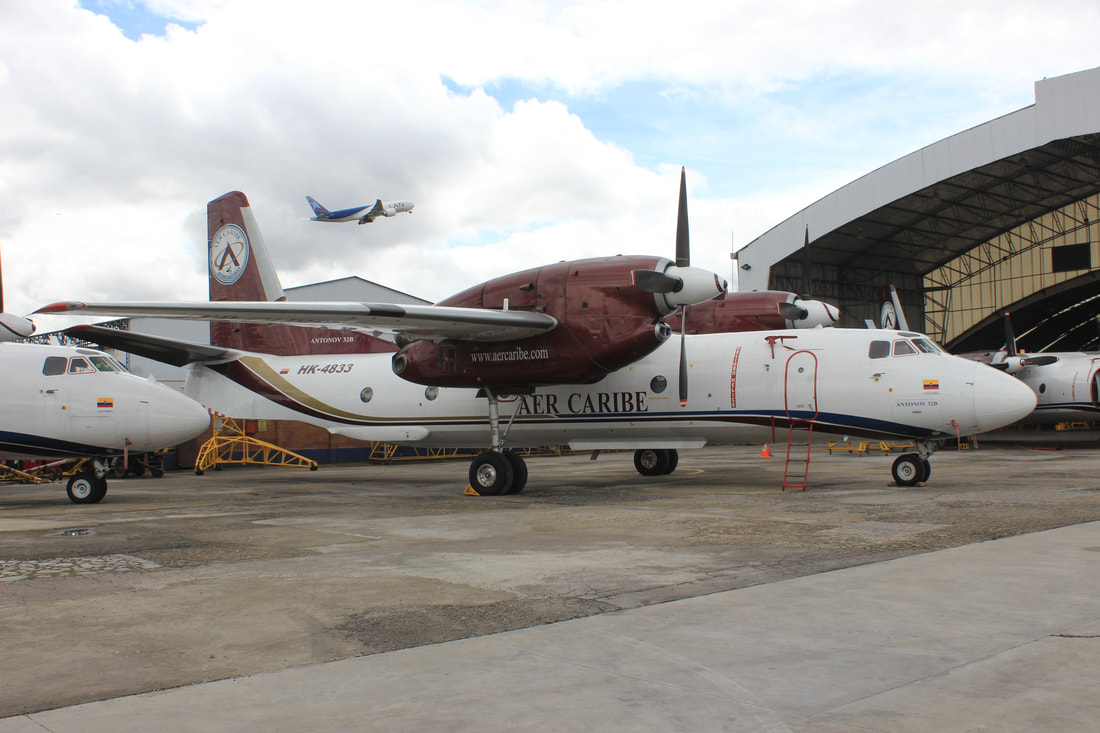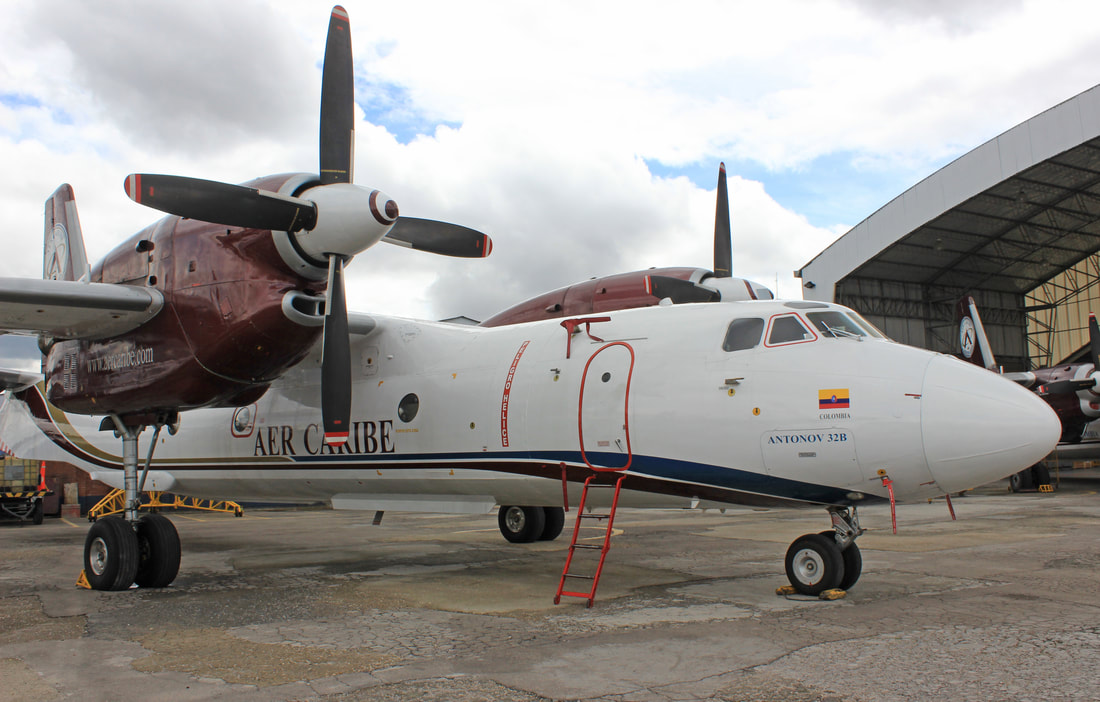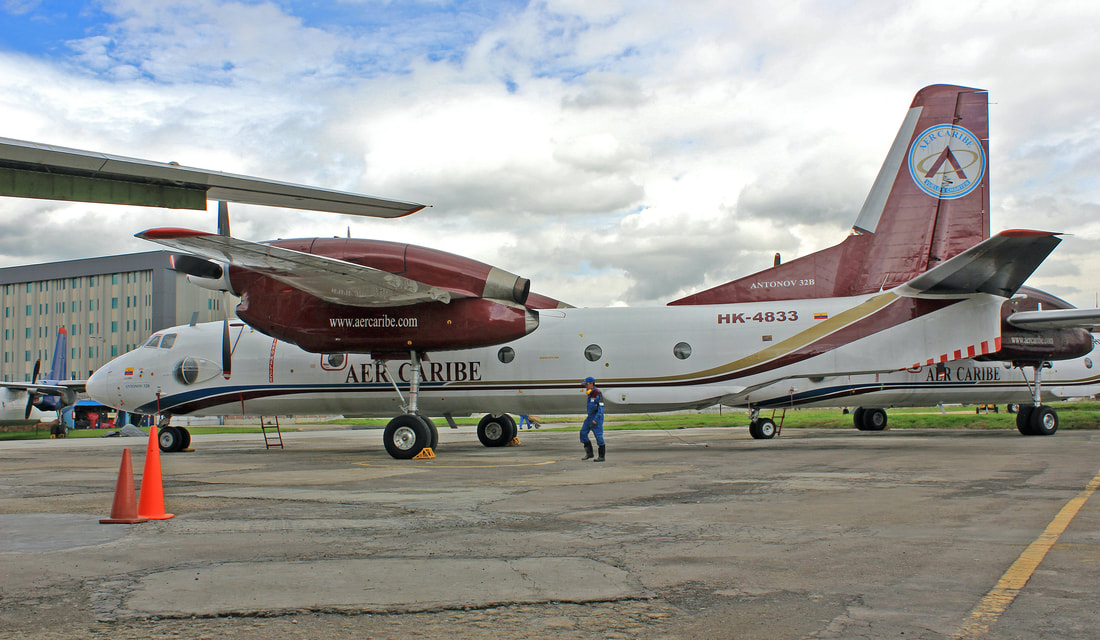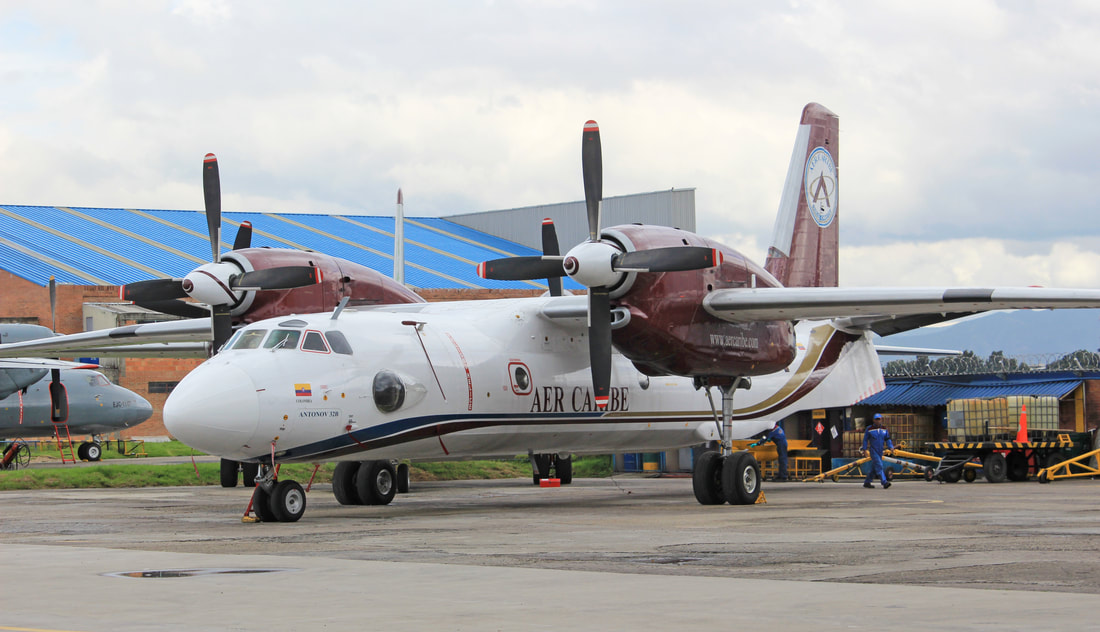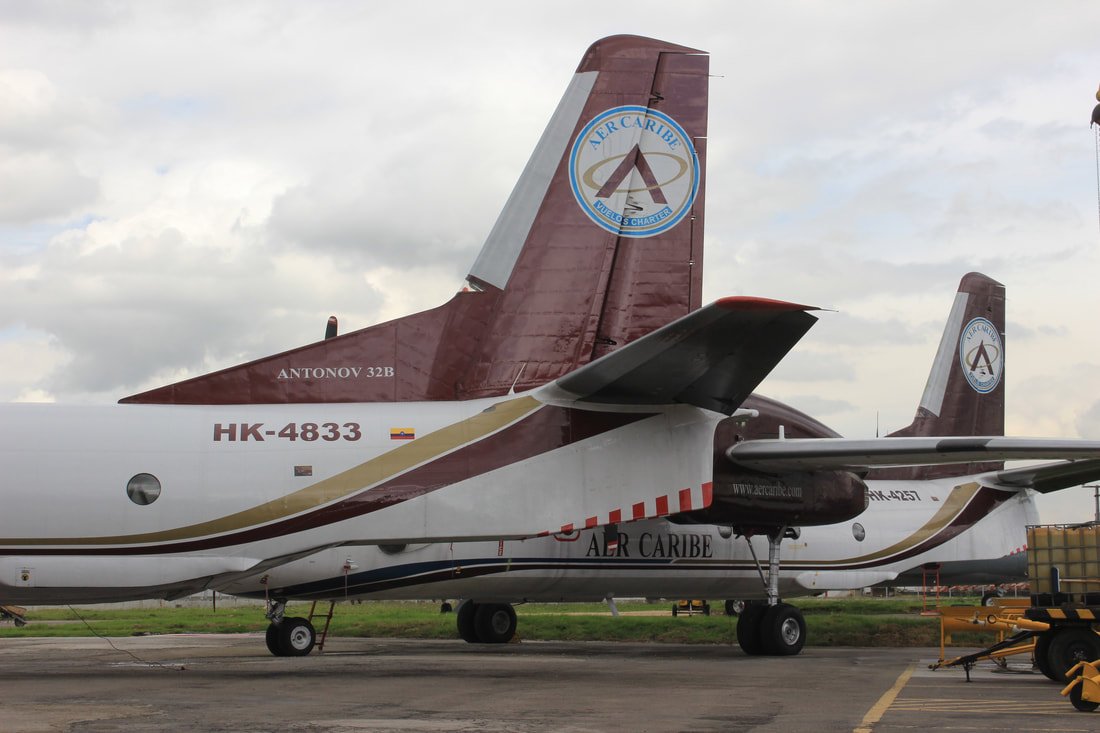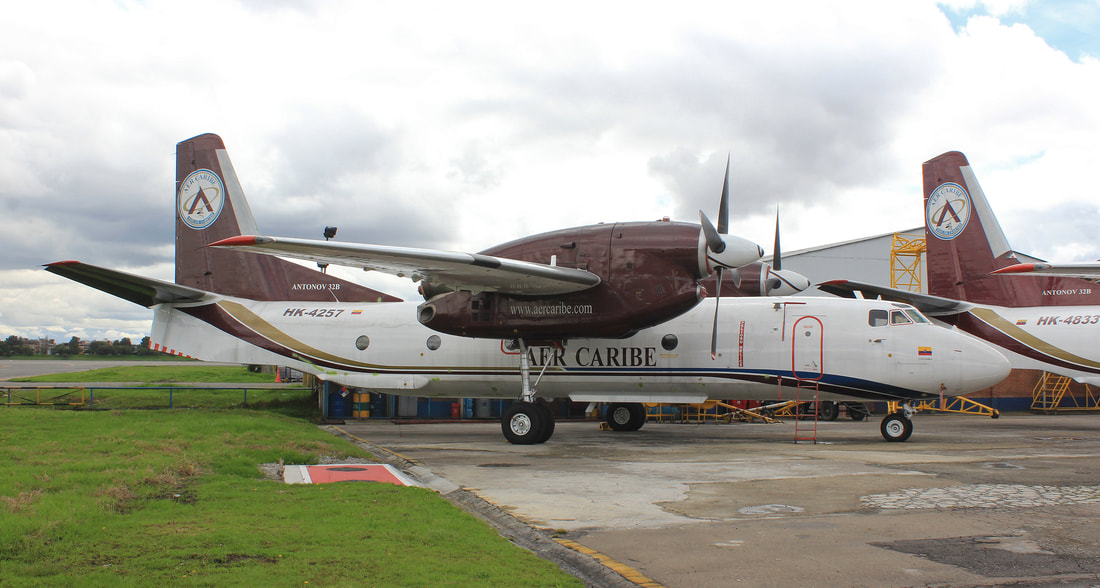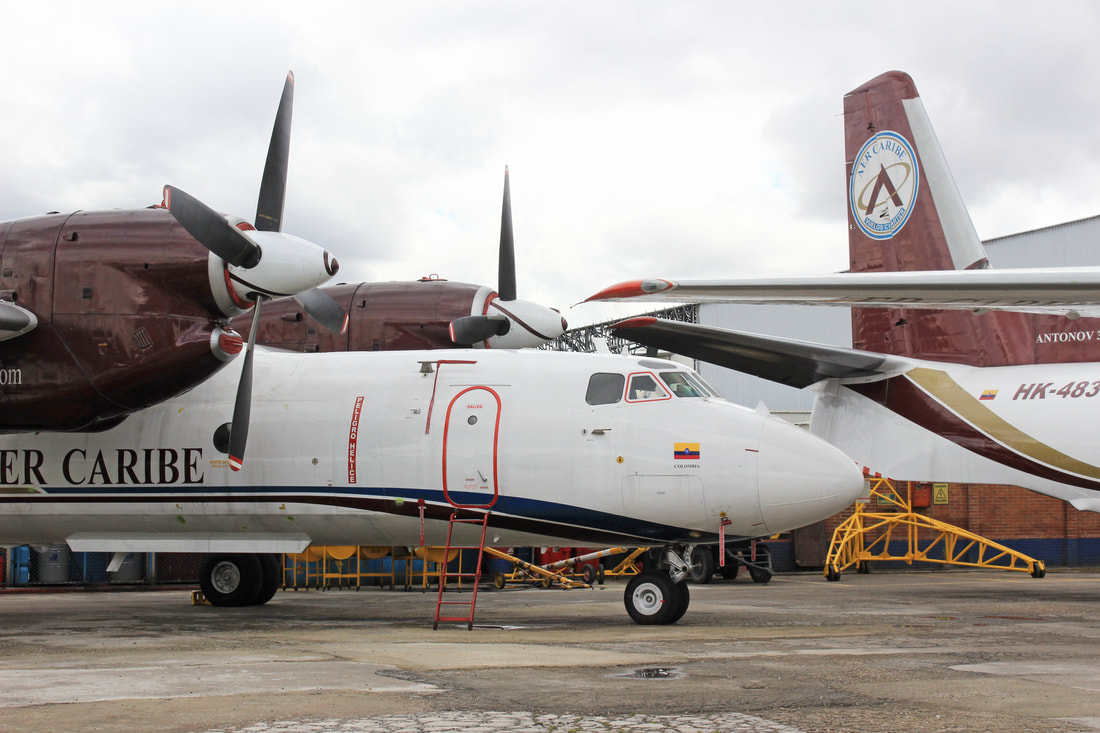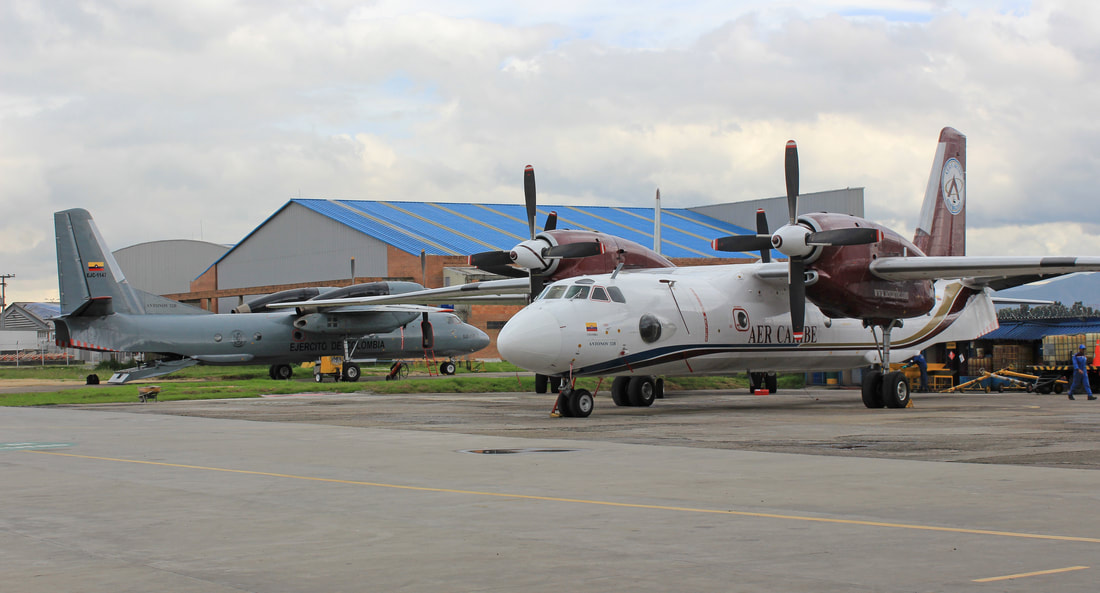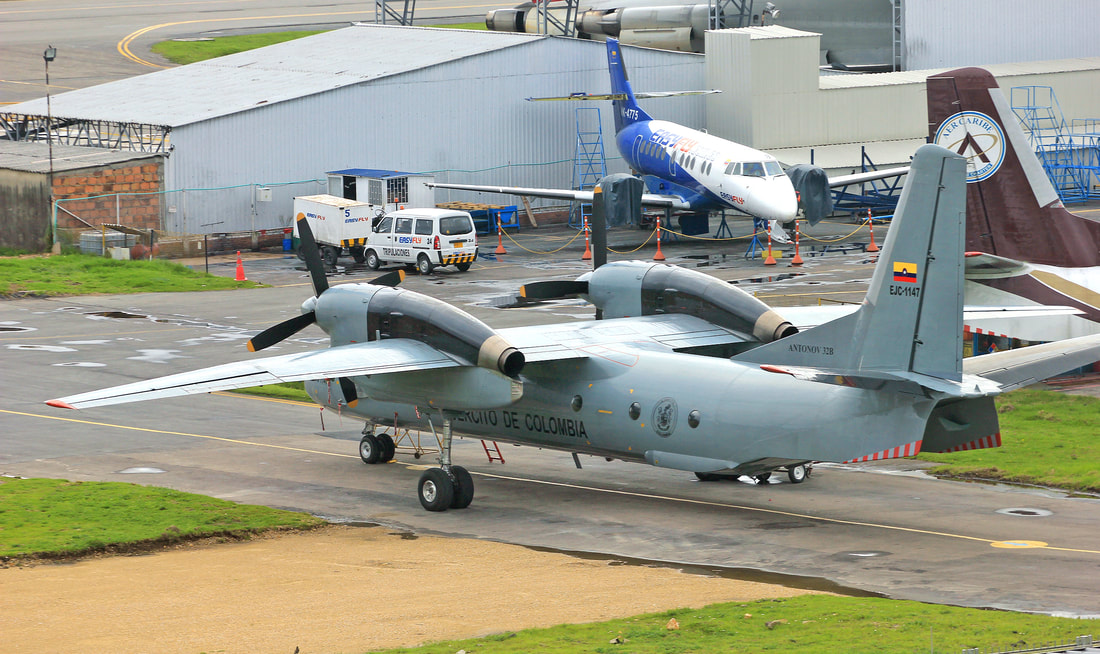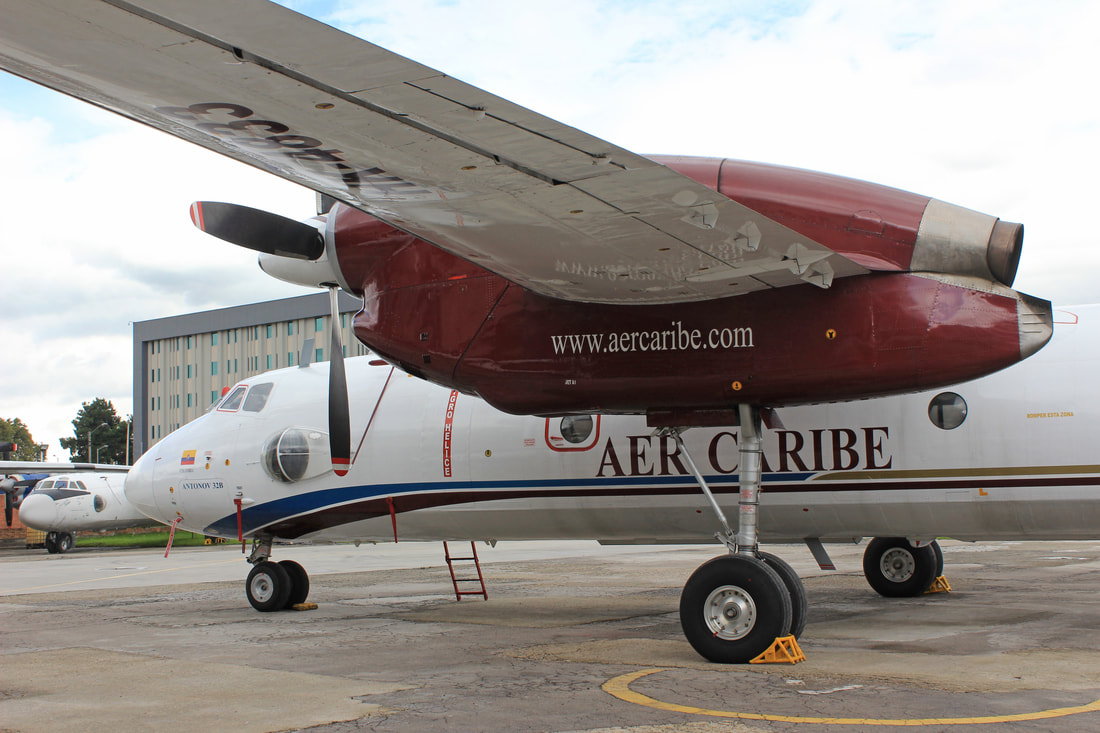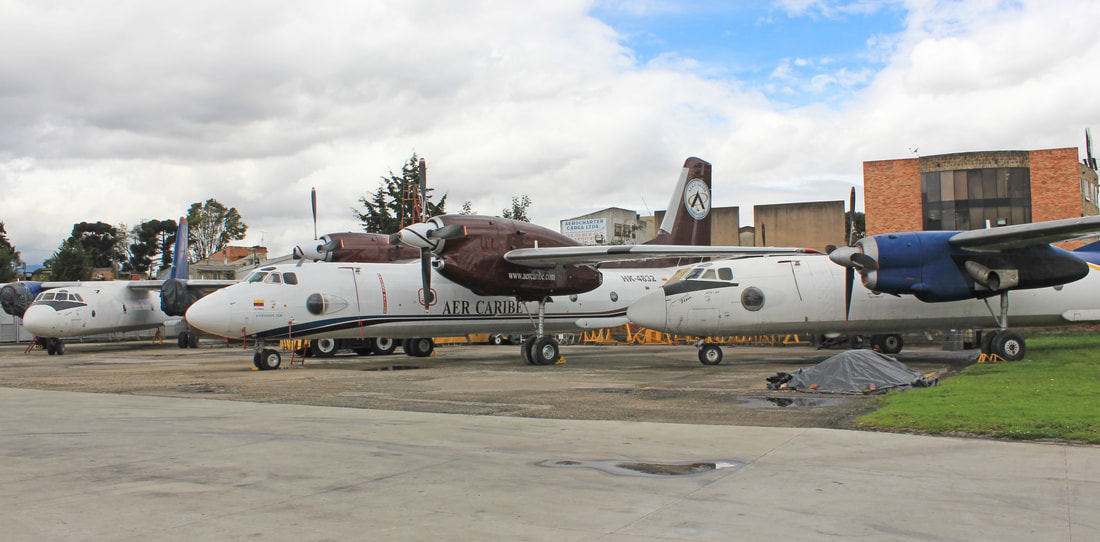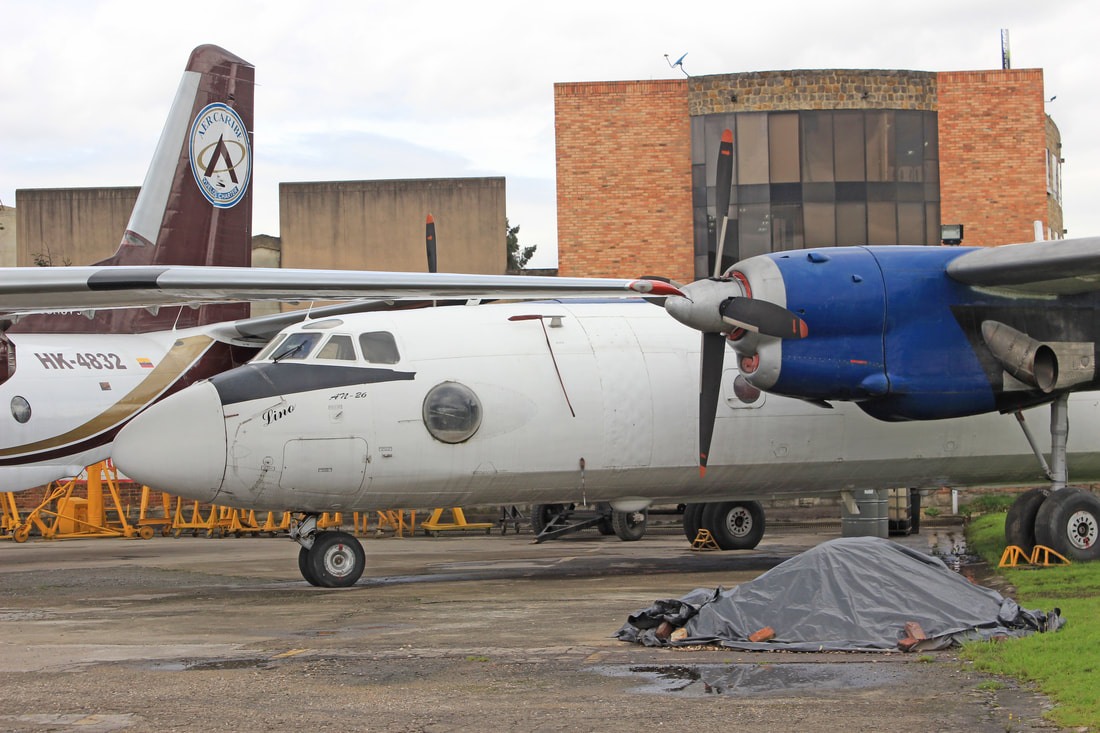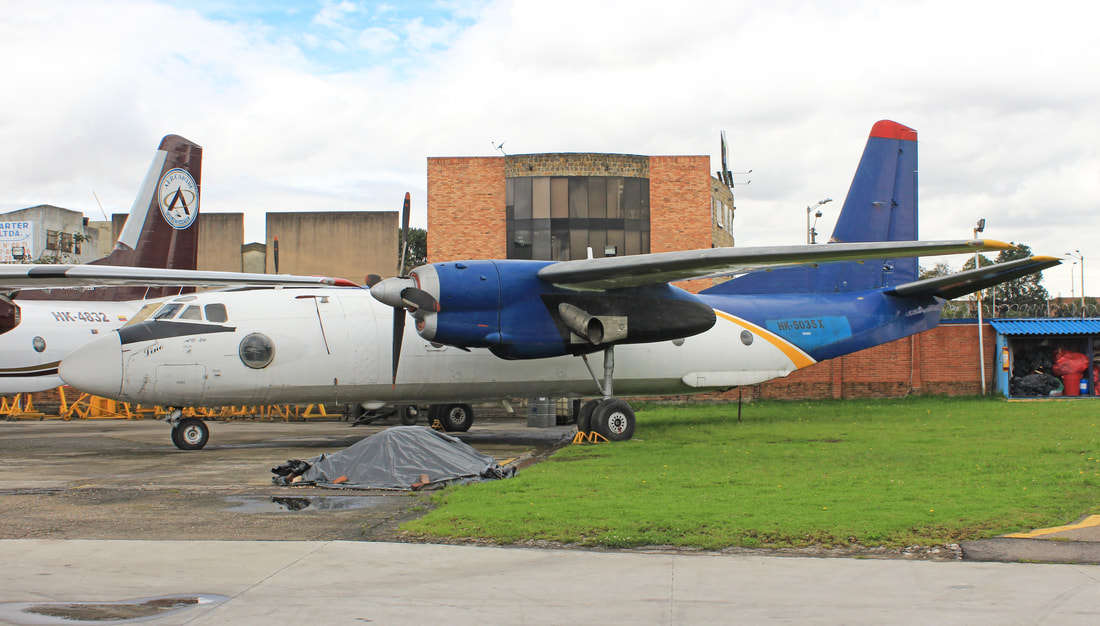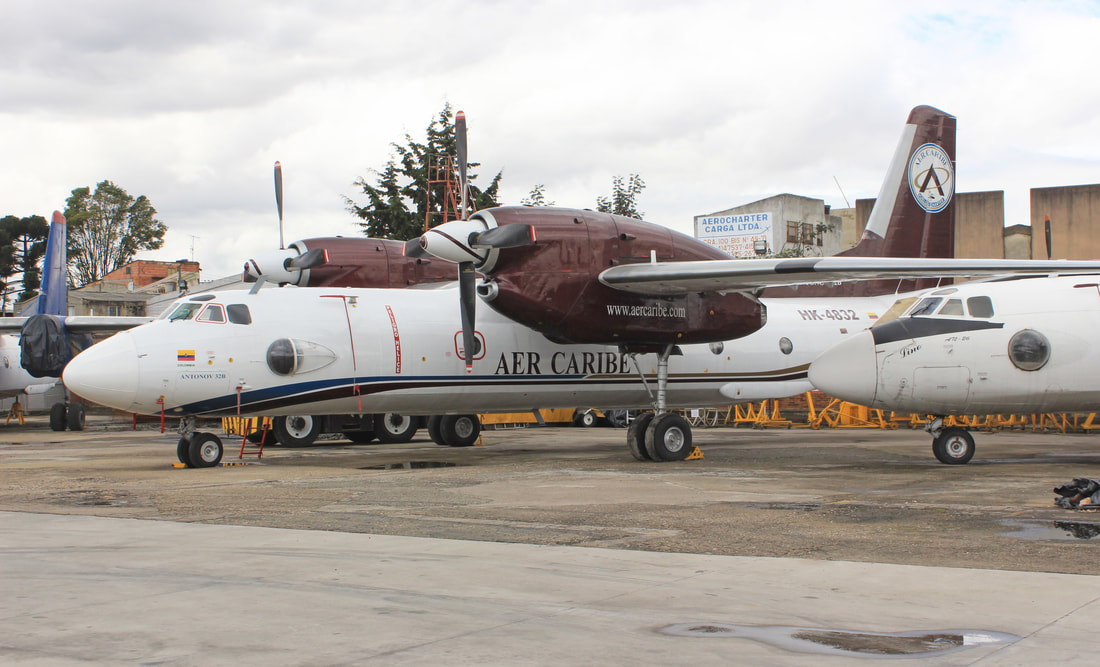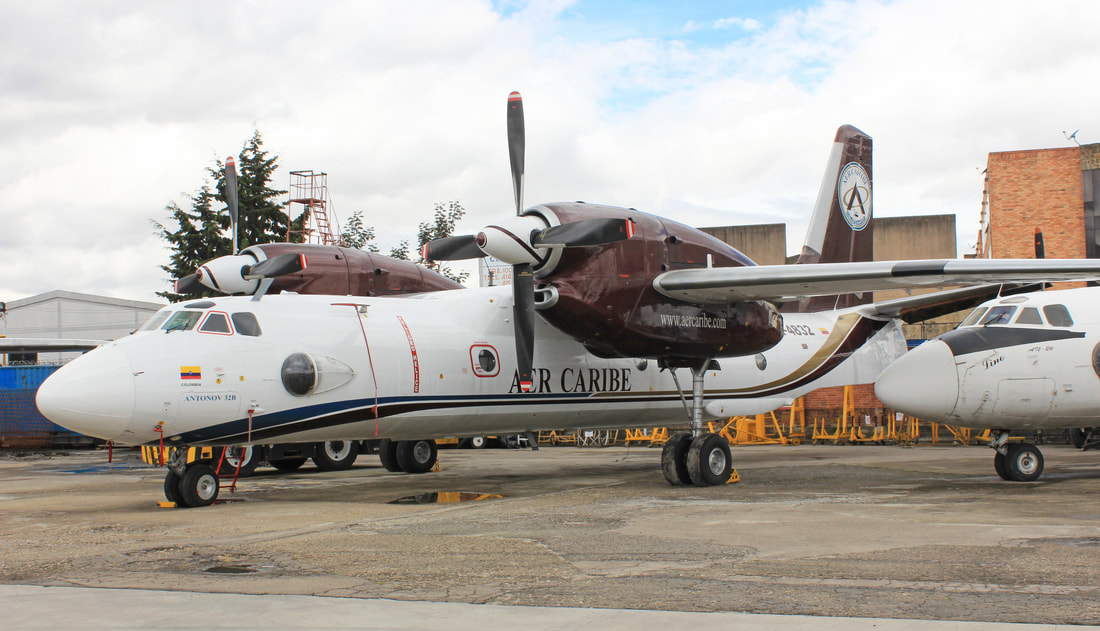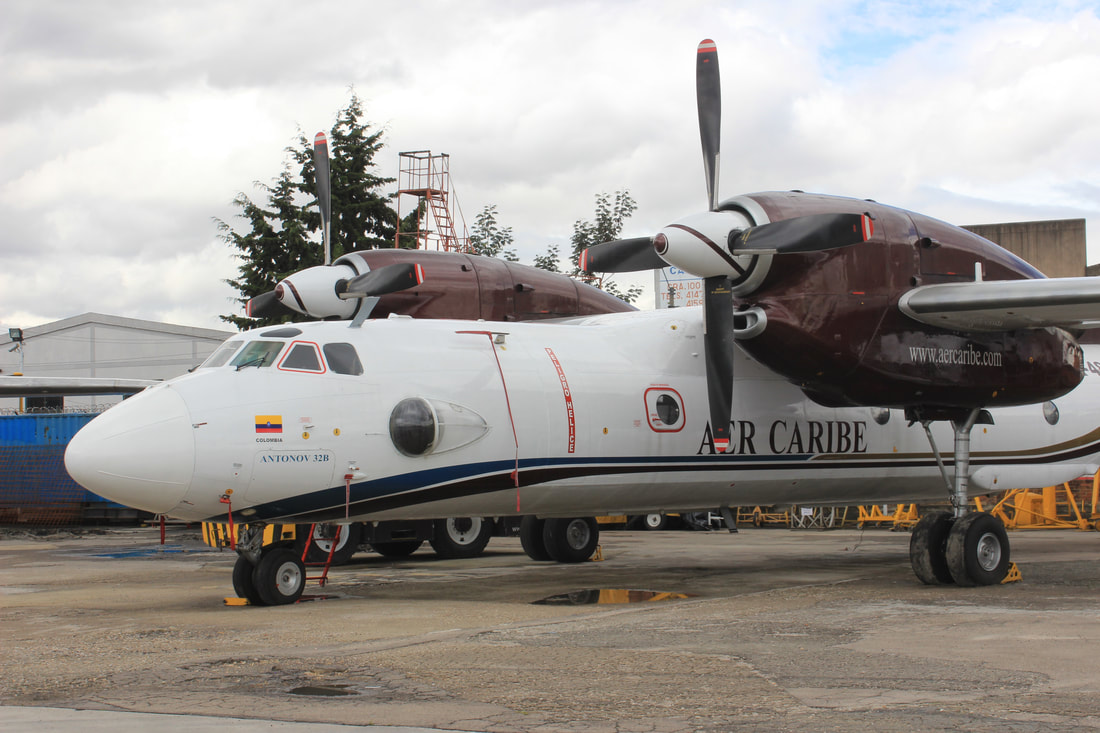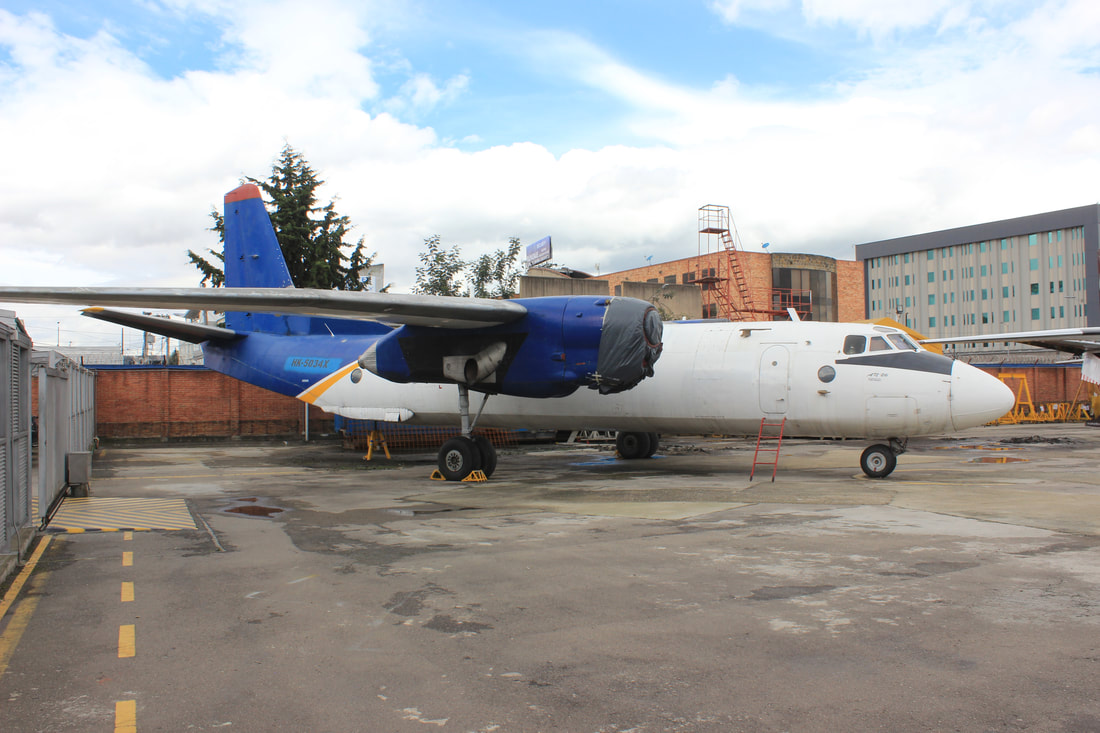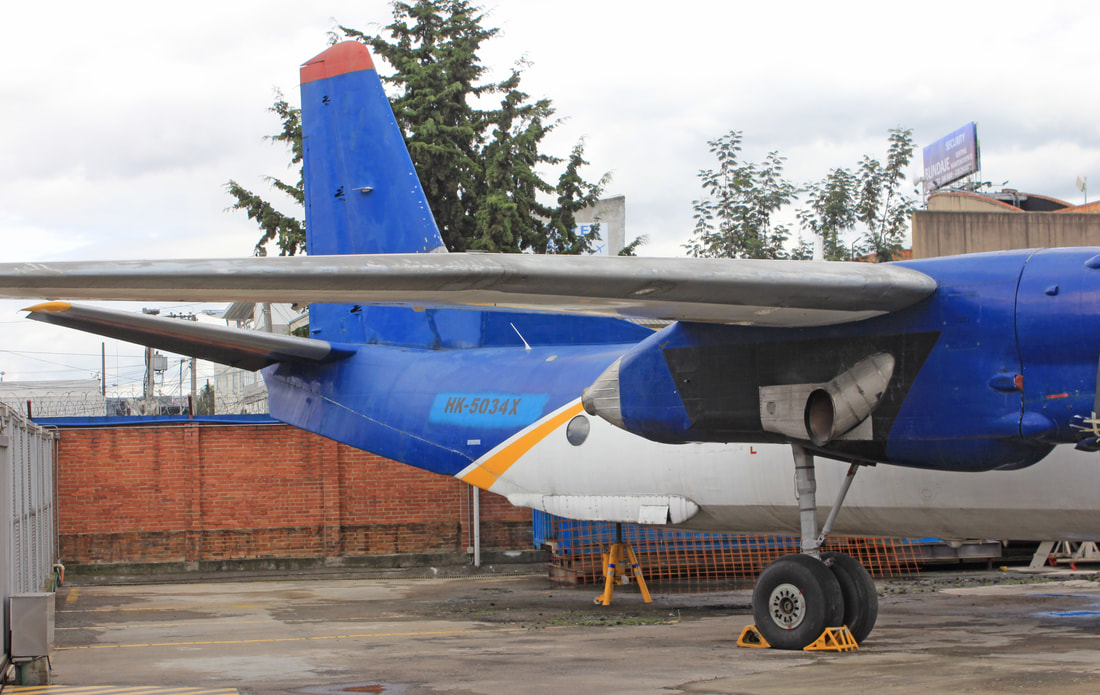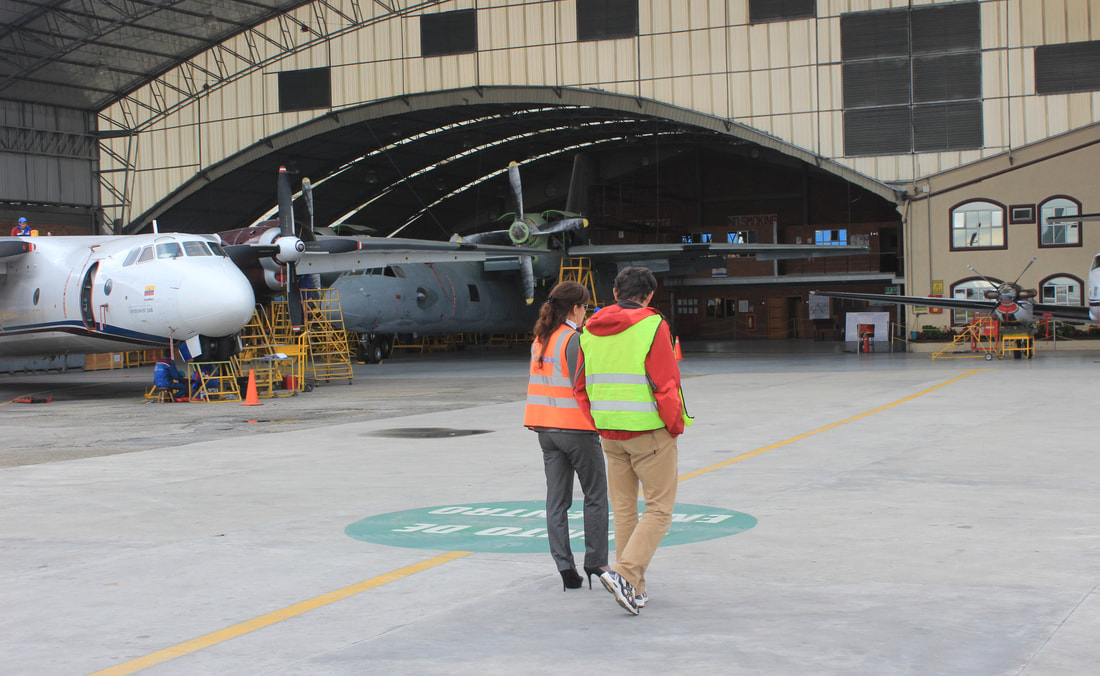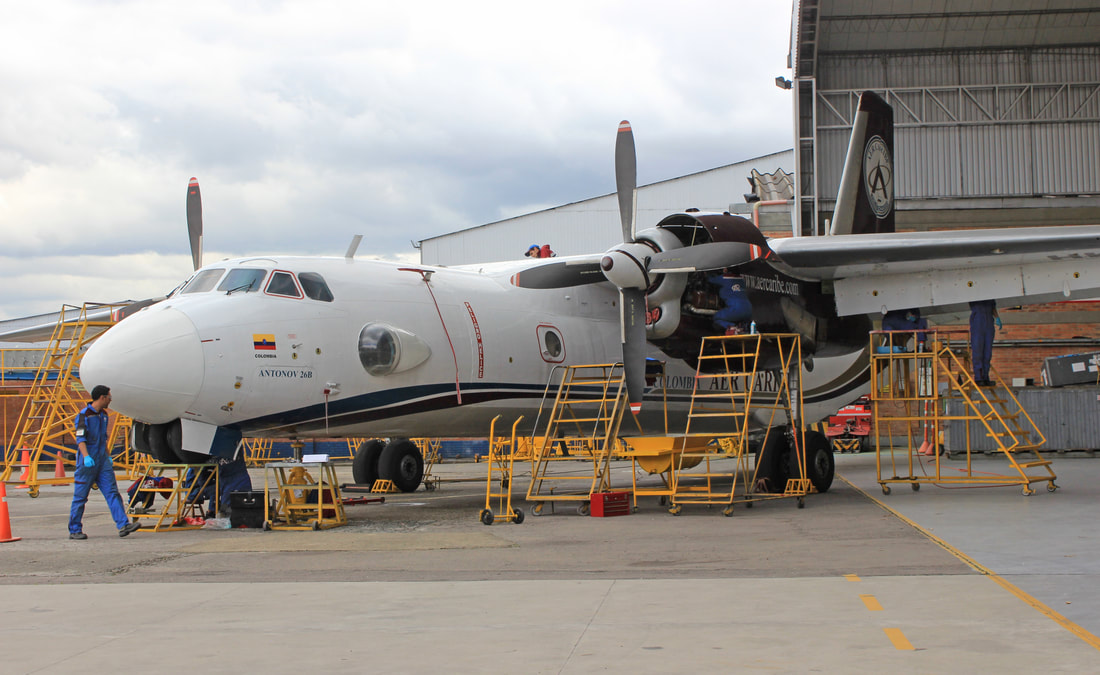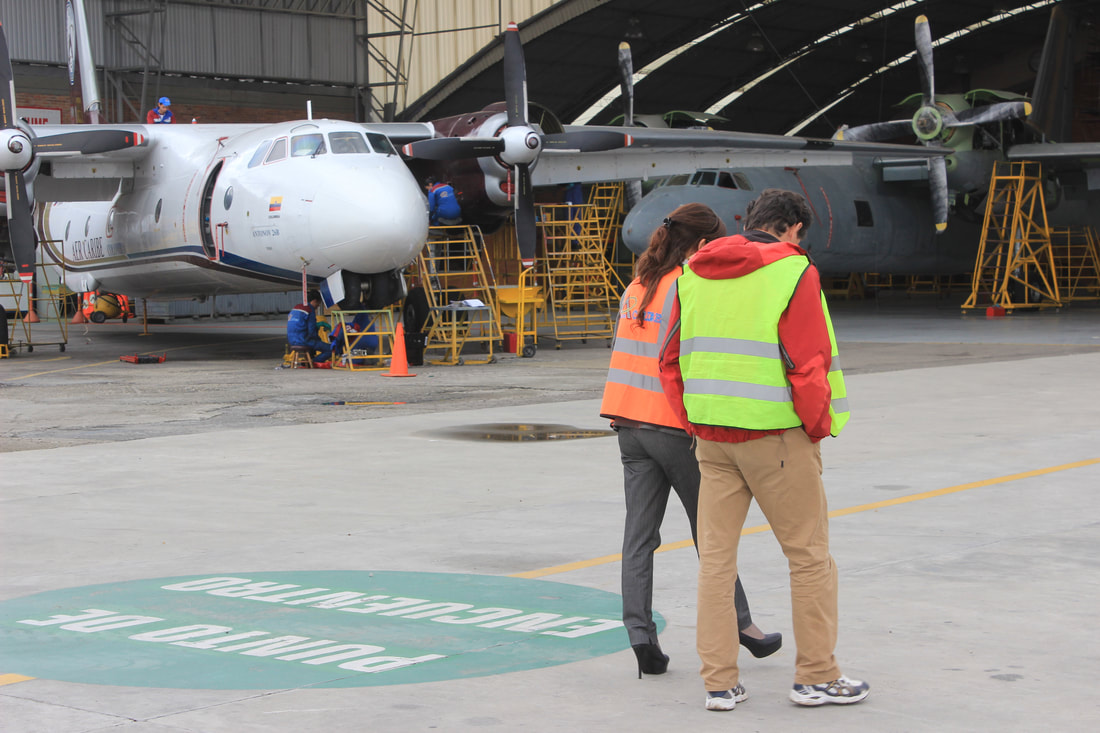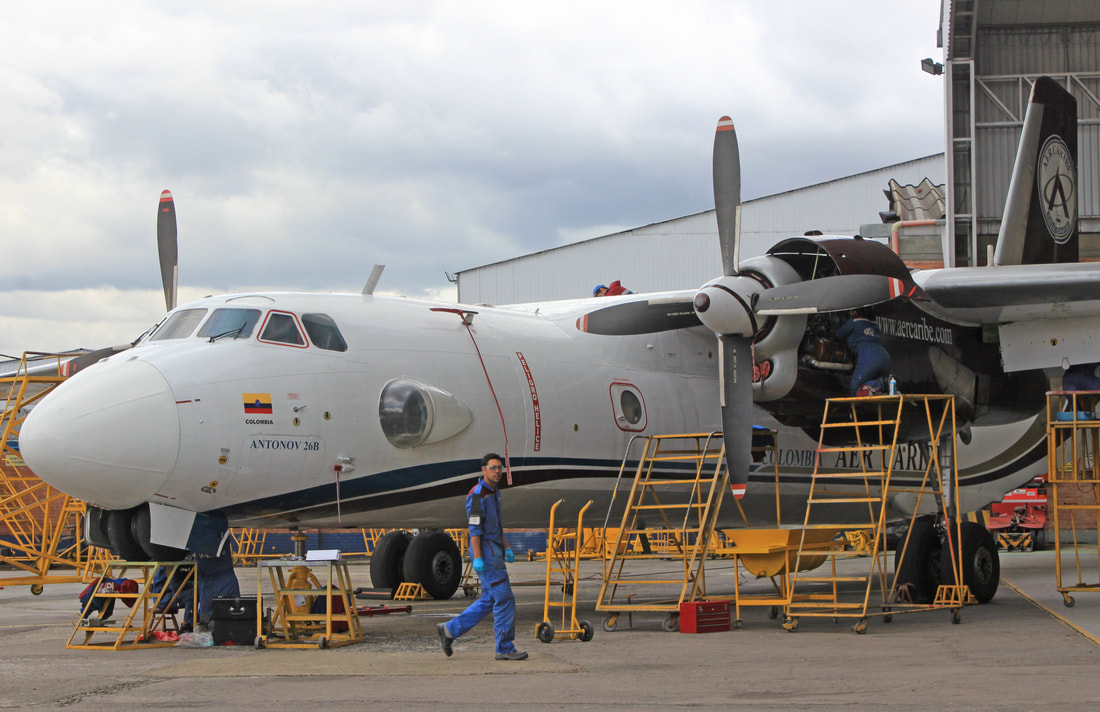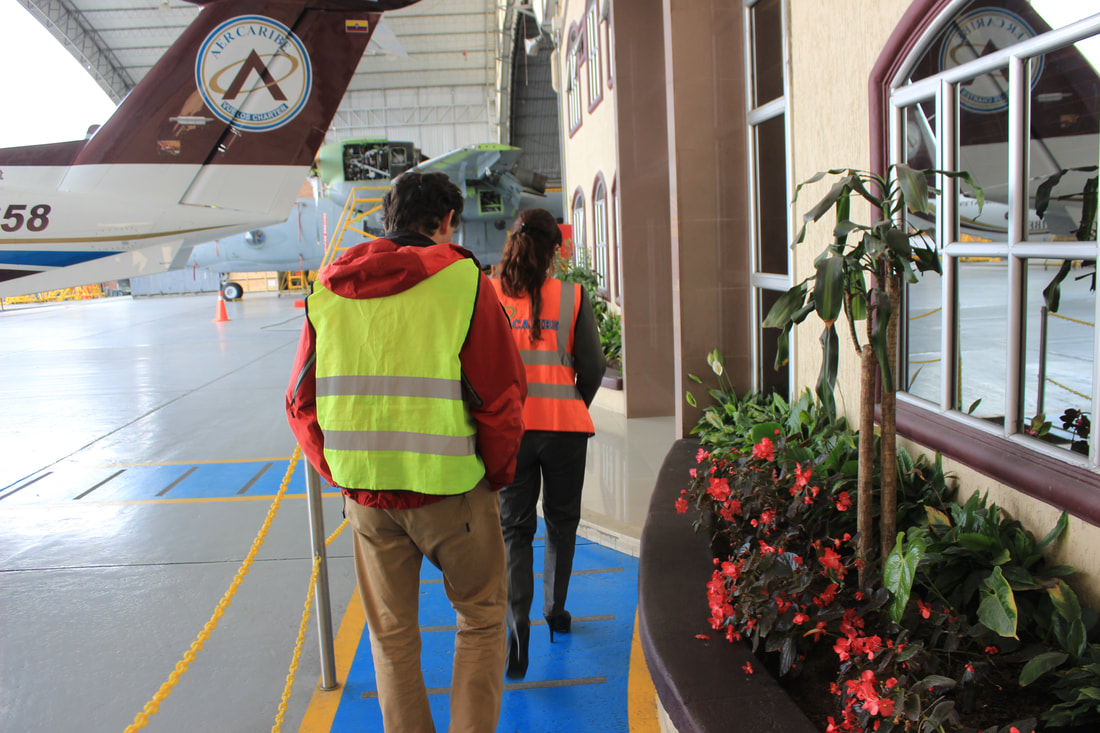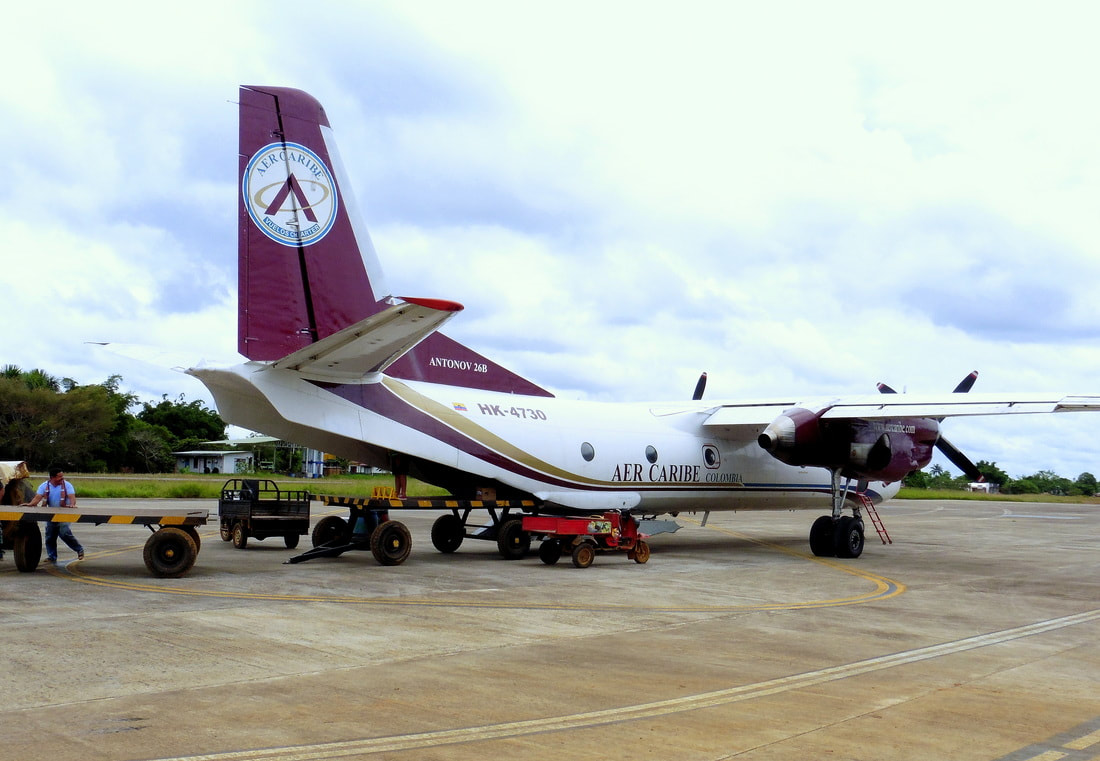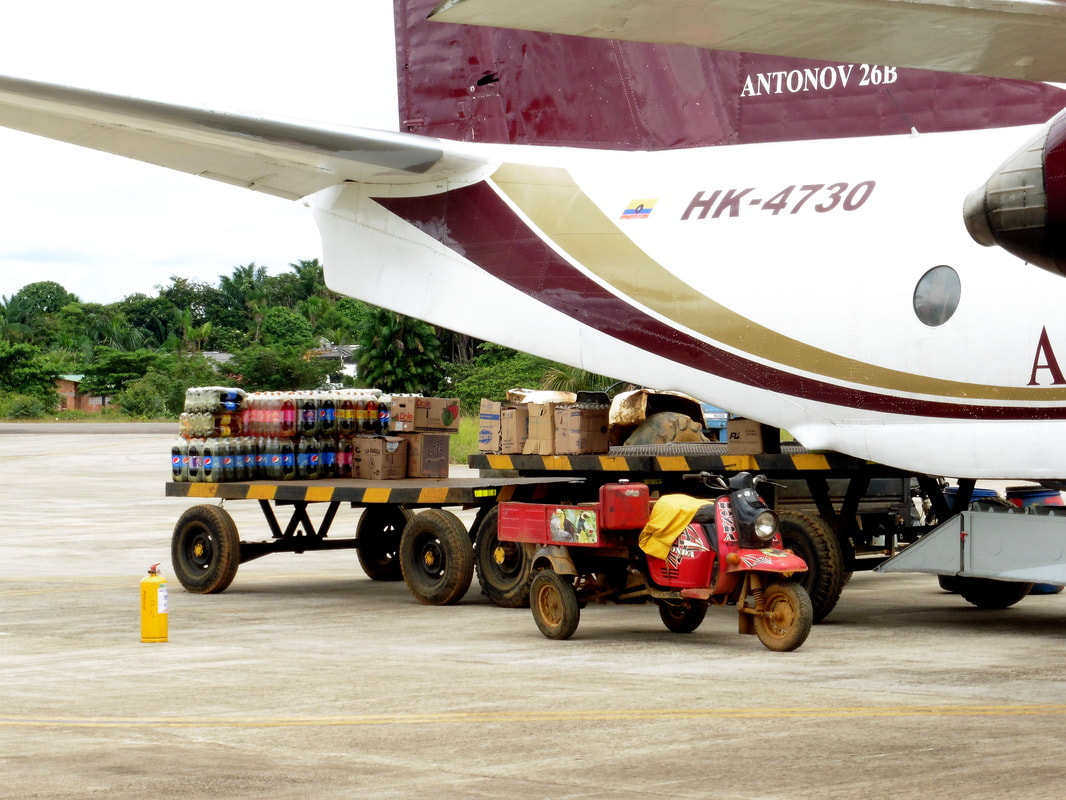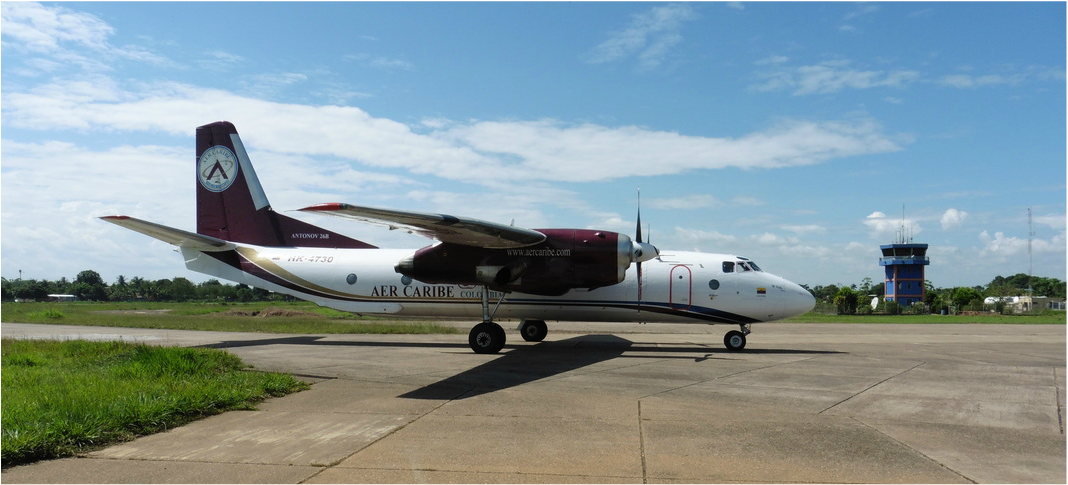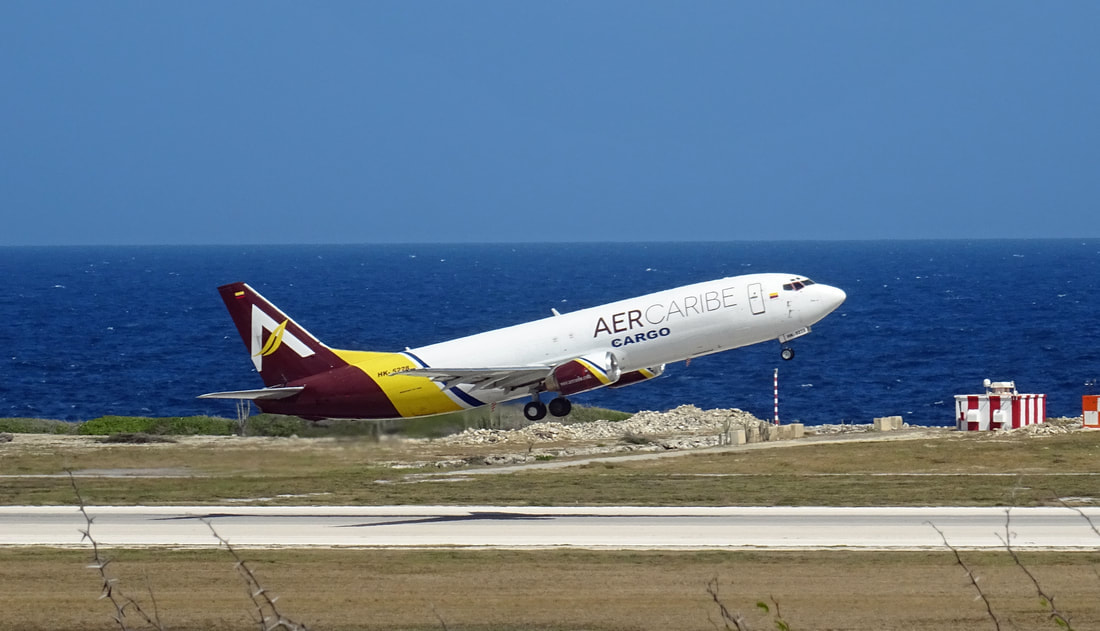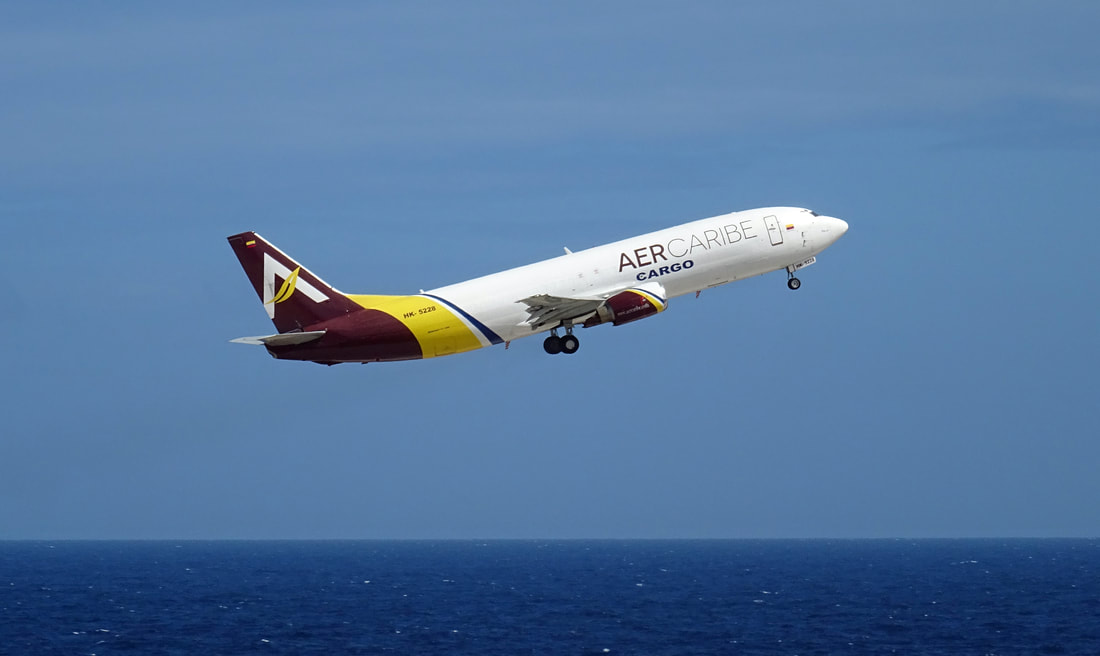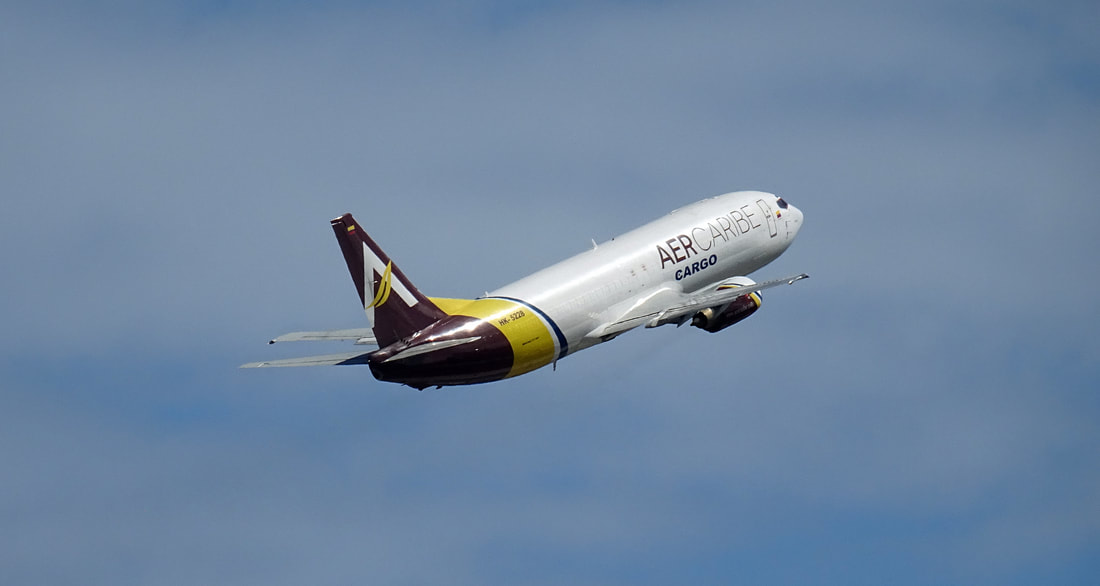AerCaribe Antonovs
By Jan Koppen
Photo's by Michael S. Prophet
In April 2015, my friend, Mr. Michael S. Prophet, and I traveled from Amsterdam to Colombia. KLM Royal Dutch Airlines brought us comfortably in one of their Big Jets, to Bogota-El Dorado. During our spotters-trip in Colombia, we took the opportunity to visit AerCaribe, which is located on the grounds of El Dorado International Airport.
Enjoy the pics, video, and captions.
Enjoy the pics, video, and captions.
AerCaribe S.A., operating as AerCaribe, is a Colombia-based carrier operating both domestic and Americas-wide executive, charter, and cargo services, as well as specialized fuel and military transport. The airline is based at Bogota's El Dorado Airport with a secondary hub at Lima's Jorge Chavez Airport operating as AerCaribe Peru. It uses a fleet of turboprop and jet aircraft.
AerCaribe began operations in 2006 with a fleet of Antonov turboprop aircraft, with domestic services in Colombia. AerCaribe operates its 3,000sqm hangar at El Dorado, with departure and VIP lounges, conference rooms, and a restaurant. The carrier is certified by Antonov to offer maintenance and restoration works on Antonov aircraft in Colombia and Latin America, as well as to act as a representative of Antonov in the sale and purchase of Antonov aircraft.
In 2011, AerCaribe launched its first subsidiary, AerCaribe S.A.C. Peru, operating as AerCaribe Peru. It is a Peruvian-based carrier that operates scheduled and charter cargo services from its base in Lima Jorge Chavez Airport within Peru.
HK-4658 Beechcraft B200 King Air was built 1977. The King Air passed through a succession of private owners, before ending up with AerCaribe in 2009.
Early morning ramp shot, I took of AerCaribe's ramp, in April 2015.
AerCaribe's hangar is looking 'spic-and-span'!
Antonov An-26B HK-4729. The aircraft first flew in 1982 as CCCP-26093 and was accepted by the SSSR Ministry of Aviation Industry. This airframe enjoyed a long and various career. Next to the Ministry, she operated respectively for; - Aviastar UAPK, Aerocom in Iran, Centrafrican Airlines, Jetline International in Moldavia, and Budapest Aircraft Service Hungary, before sold to AerCaribe.
A slightly dented skins evident on the fuselage in the plane of the propeller disc.
This view also accentuates the ruggedness of the Antonov.
The Antonov An-26 (NATO reporting name: Curl) is a twin-engined turboprop civilian and military transport aircraft, designed and produced in the Soviet Union from 1969 to 1986.
After successful operations of the An-24T tactical transport in austere locations, interest in a version with a retractable cargo ramp increased. Initial studies for the retractable ramp were carried out as part of the projected An-40 medium transport. When given the go-ahead for the An-26 in March 1968, the Antonov OKB adapted the ramp design of the An-40 to the An-24 fuselage, resulting in the An-26. Particular attention was given to the military mission, and the majority of early An-26 production was delivered to the VTA (voyenno-transportnaya aviatsiya).
Using the majority of the An-24 airframe, with its high-set cantilevered wings, twin turboprops and stalky main undercarriage, the An-26 included military equipment, such as tip-up paratroop canvas seats, an overhead traveling hoist, bulged observation windows and parachute static line attachment cables.
Using the majority of the An-24 airframe, with its high-set cantilevered wings, twin turboprops and stalky main undercarriage, the An-26 included military equipment, such as tip-up paratroop canvas seats, an overhead traveling hoist, bulged observation windows and parachute static line attachment cables.
The Ivchenko AI-24 turboprop aircraft engine was designed and developed in the late-1950s by the Ivchenko design bureau and manufactured thereafter by Motor Sich. It was designed to power Antonov's successful An-24, An-26 and An-30 aircraft series.
The An-26B is a civil cargo version equipped with roller gangways which can be swung up against the cabin walls when not in use. It was also equipped with two Ivchyenko Al-24VT turboprop powerplants to deliver higher thrust.
The Ivchenko AI-24VT turboprop aircraft engine is an uprated variant produced 2,100 kW (2,820 shp) differentiated because it was coupled with an RU19A-300 APU/booster instead of the regular TG-16M auxiliary power unit (APU) turbine. It is mainly used to power the An-26.
Meticulous maintenance keeps ‘em flying.
The Antonov An-32 (NATO reporting name: Cline) is a turboprop twin-engined military transport aircraft.
Originally this Antonov An-32 has been manufactured in 1993 at the Svyatoshyn plant as an An-32B. Her first operator was Ukraine Transavia, who registered her UR-48012. Several years later, she was sold to the Mexico Navy. After retirement from the military, c/n. 3404 was sold on the civilian market to AerCaribe.
The An-32 is essentially a re-engined An-26. It is designed to withstand adverse weather conditions better than the standard An-26. Announced at the May 1977 Paris Air Show, the An-32 is distinguished from its predecessor by engines raised 1.5 m above the wing to avoid foreign object damage on rough, unprepared airstrips.
The type features high-lift wings with automatic leading-edge slats, large triple-slotted trailing edge flaps, and an enlarged tailplane, and a substantial increase in power, giving improved take-off performance and service ceiling. The high placement of the engine nacelles above the wing allowed for larger diameter propellers driven by 5,100 hp rated Ivchenko AI-20 turboprop engines, providing almost twice the power of the An-26's AI-24 powerplants.
Production from the Government Aircraft Factory in Kyiv has included 123 aircraft for the Indian Air Force, which ordered the aircraft under strong foreign relations between then USSR leader Leonid Brezhnev and India leader Indira Gandhi. The majority of production has been for the Russian and Ukrainian Air Forces, with around 40 per year being built during the late 1980s to early 1990s. The estimated price for a modernized An-32 version is 15 million US dollars.
The AI-20 was the first gas turbine engine developed by the design bureau led by Aleksandr Ivchenko based at Zaporizhia, USSR, which had previously concentrated on small piston engines such as the Ivchenko AI-14 and AI-26 radials. It was designed as a prospective powerplant for the new, large Ilyushin Il-18 airliner and the Antonov An-10, powered by four turboprops, in competition with the Kuznetsov NK-4 engines. Both engines were tested on the preproduction batch of 20 Il-18s. Still, the Ivchenko engine was chosen for full production, possibly due to a crash caused by an inflight failure of an NK-4 engine, and perhaps due to the desire for the engines of the Ukrainian An-10 to also be built in Ukraine.
A rather overcast day at Bogota.
This Antonov An-32B made its first flight in December 1992 before being delivered to NAK Air as RA-48139. Four years later, she was sold to Ukraine Air Alliance as UR-48139. After faithful service for these Ukrainian companies, the An-32B found employment in Peru with Aerolineas Alpha as OB-1669 dd. 1996. In June 2002 she was ferried to Colombia and started operating for Sociedad Aérea del Caquetá Ltda. At a later stage, she went to work for SAEP as HK-4257 before ending up with AerCaribe in October 2006.
The Ivchenko AI-20 is a Soviet turboprop engine developed by the Ivchenko design bureau in the 1950s. It has been built in large numbers, serving as the powerplant for the Antonov An-12 transport and the Ilyushin Il-18 airliner.
The An-32 has outstanding takeoff characteristics in hot and high conditions, up to 55 °C (131 °F; 328 K) and 4,500 m (14,800 ft) elevation, is suitable for use as a medium tactical military transport role as well as commercial roles. Operating as a cargo transport over the short and medium-range air routes, the An-32 is suitable for air-dropping cargo, passenger-carrying, medevac, firefighting, skydiving, or para trooping roles.
This Antonov An-32 was initially delivered to Aeroflot in 1992 and stayed in service with them for several years. The An-32 then spent several years with Panamian carrier Las Americas Car and a brief spell with Aerocharter de Nicaragua as YN-CGA. After this civil career, she was sold to the military in Colombia and became part of the Ejercito de Colombia as EJC-1147.
The Il-18B was powered by four Ivchenko AI-20A Series 1 turboprop, each providing a takeoff power of 2,985 kW (4,000 shp) and sustained power of 2,090 kW (2,800 shp) at cruise altitude. Early Il-18A production was initially fitted with Kuznetsov NK-4 engines, but they were soon exchanged for AI-20s. Later Il-18B production featured AI-20A Series 2 engines, with the same power ratings but technical improvements. Thus older machines were updated with the Series 2 powerplants.
The AI-20s drove four-bladed variable pitch reversible props with a diameter of 4.5 meters (14 feet 9 inches), featuring prominent propeller spinners and hydraulic actuation for prop pitch. The engines were mounted above the wing and featured integrated fire extinguishers. The engines were started with electric motors, the power for the motors being provided by a ground cart.
The AI-20 is a single-shaft turboprop with a ten-stage axial compressor and a three-stage power turbine designed to run at a constant speed. A big problem with early production engines was the poor reliability of the AI-20 engines, which had a time between overhauls (TBO) in the range of 600 to 750 hours. The AI-20K engine variant was finally introduced, with a TBO of 2,000 hours – unimpressive by modern standards, but a big improvement.
The AI-20 is a single-shaft turboprop with a ten-stage axial compressor and a three-stage power turbine designed to run at a constant speed. A big problem with early production engines was the poor reliability of the AI-20 engines, which had a time between overhauls (TBO) in the range of 600 to 750 hours. The AI-20K engine variant was finally introduced, with a TBO of 2,000 hours – unimpressive by modern standards, but a big improvement.
Antonov An-26 'Pino'. - Her time is running-out.
Aero Caribbean was operating this freighter on lease from Cubana de Aviacion. In 2012, it passed into the hands of Venezuela-based cargo carrier Solar Cargo as YV-1402, named 'Pino.' In 2014, she was acquired for parts by AerCaribe and stored at their premises at Bogota. She still retains tell-tale signs of her last airline identity in this photograph, taken in March 2015.
Antonov An-32B HK-4832 was initially being delivered in the early '90s to Aeroflot as CCCP-48069. After some years, she was exported to Mexico, and the Mexico Navy became her proud owner. When her military career with the Mexicans was over, she was exported to Colombia in March 2012, and AerCaribe started operating her as HK-4832.
One issue that was never addressed was noise; turboprops are relatively noisy, and high noise levels were a problem for the passengers. As mentioned, the engine's overhaul life was initially poor compared with modern western engines, being reported as 600–750 hours in 1964. It was later improved by continuous development to 8,000 hours, with a service life of 22,000 hours in the AI-20D series 5M.
Serial production was carried out at Zaporizhzhia (Motor Sich) and Perm Engine Plant (UEC-Perm Engines), USSR, in 1958, also being built under license in China the WJ-6. About 14,000 AI-20s have been built in total.
Serial production was carried out at Zaporizhzhia (Motor Sich) and Perm Engine Plant (UEC-Perm Engines), USSR, in 1958, also being built under license in China the WJ-6. About 14,000 AI-20s have been built in total.
Russian hardware on a tranquil AerCaribe tarmac in April 2015.
This Antonov An-26 c/n. 9810, in former Solar Cargo colors, was built in 1980 at UKKT Svyatoshyn airfield. Svyatoshyn is an industrial airfield in Kyiv, Ukraine, located 11 km northwest of the city center. It is a part of the Antonov Serial Production Plant. She is a former Solar Cargo YV-1403 and has been a frequent visitor to Curacao, Hato airport. Later she was bought for parts by AerCaribe and registered HK-5035X.
Antonov An-26 HK-5034X marooned in a corner of AerCaribe parking ramp.
AerCaribe and AerCaribe Peru both offer scheduled and charter cargo services from their respective bases within Colombia, South, Central America, the Caribbean, and Peru.
Antonov An-26B HK-4729 receives mechanical attention in the open.
In 2015, AerCaribe received its first of three converted B737s (passenger to freighter). The aircraft offers 11 pallet positions, a full-featured cargo loading system with retractable sill plate and over-rideable side restraints, all engineered to deliver good reliability and a 48,000lbs (22 tonnes) maximum payload.
An-26 maintenance, Bogota, April 2015.
Time to say goodbye!
On April 20, 2015, I saw this Aer Caribe An-26B being unloaded at Mitu, near the Colombian-Brasilian border.
On October 14, 2020, an AerCaribe Colombia An-32 veered off the Iquitos runway, ripping off the wings and landing gear, starting a fire. All the crew members survived, but the aircraft was destroyed by fire.
Pepsi Cola is favourite in Mitu.
HK-4730 at San José del Guaviare. The airport is a military base and this An-26 arrived during my visit on April 20, 2015.
Antonov An-26B HK-4730 of Aer Caribe has spent a good part of its lifetime working as a sky-truck in Europe. She flew for CityLine Hungary as HA-TCX, JetLine as ER-AZF, Farnair Europe as ER-AZF and Air Highness as EK-26510. In August 2014 she sustained substantial damage due to a nose gear incident at San Jose. Fortunately, the damage could be repaired
In February 2020 we visited Curaco and spotted the following AerCaribe Cargo 737.
AerCaribe Cargo Boeing 737-400F launches into the sky on February 08, 2020, against the backdrop of the Caribbean sea.
HK-5228 is a Boeing 737-4B6(SF) which has spent nearly all of its working life based in Marocco was exported in 2017 to Colombia and started working for AerCaribe.
Boeing 737-4B6(BF), climbing and beginning its left turn after a runway 11 take-off.
On 28th January 2017, an AerCaribe Peru 737-400 freighter overran the runway while landing in Leticia, tearing off the main landing gear. The aircraft was damaged beyond repair.
- The End -
